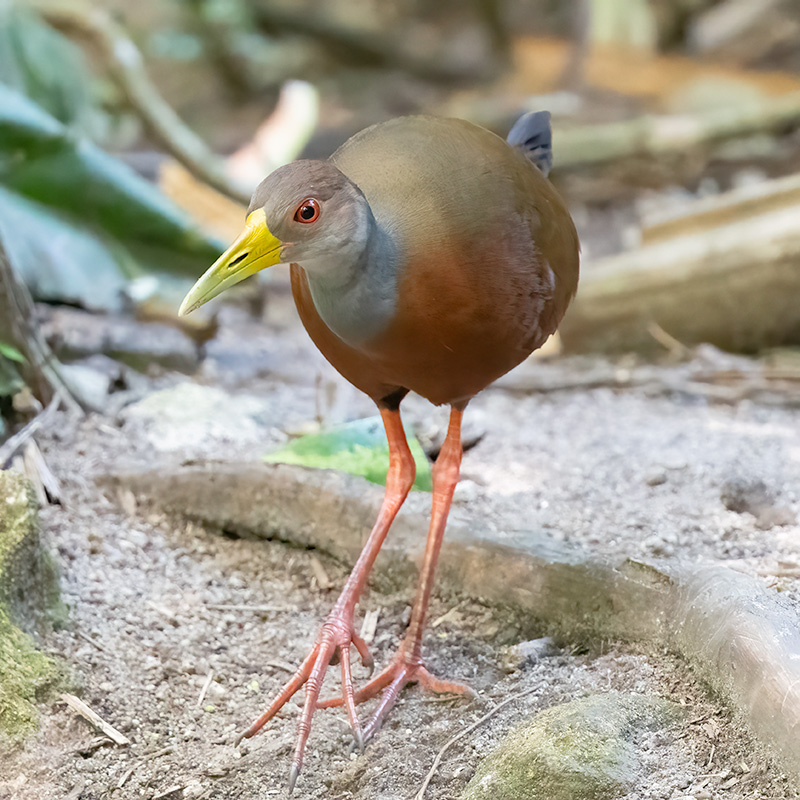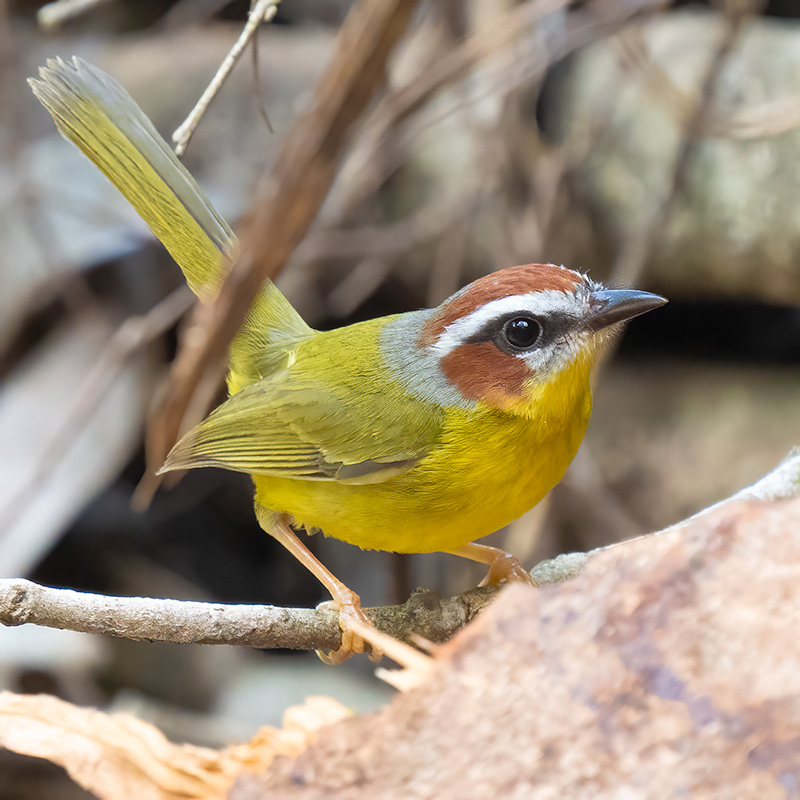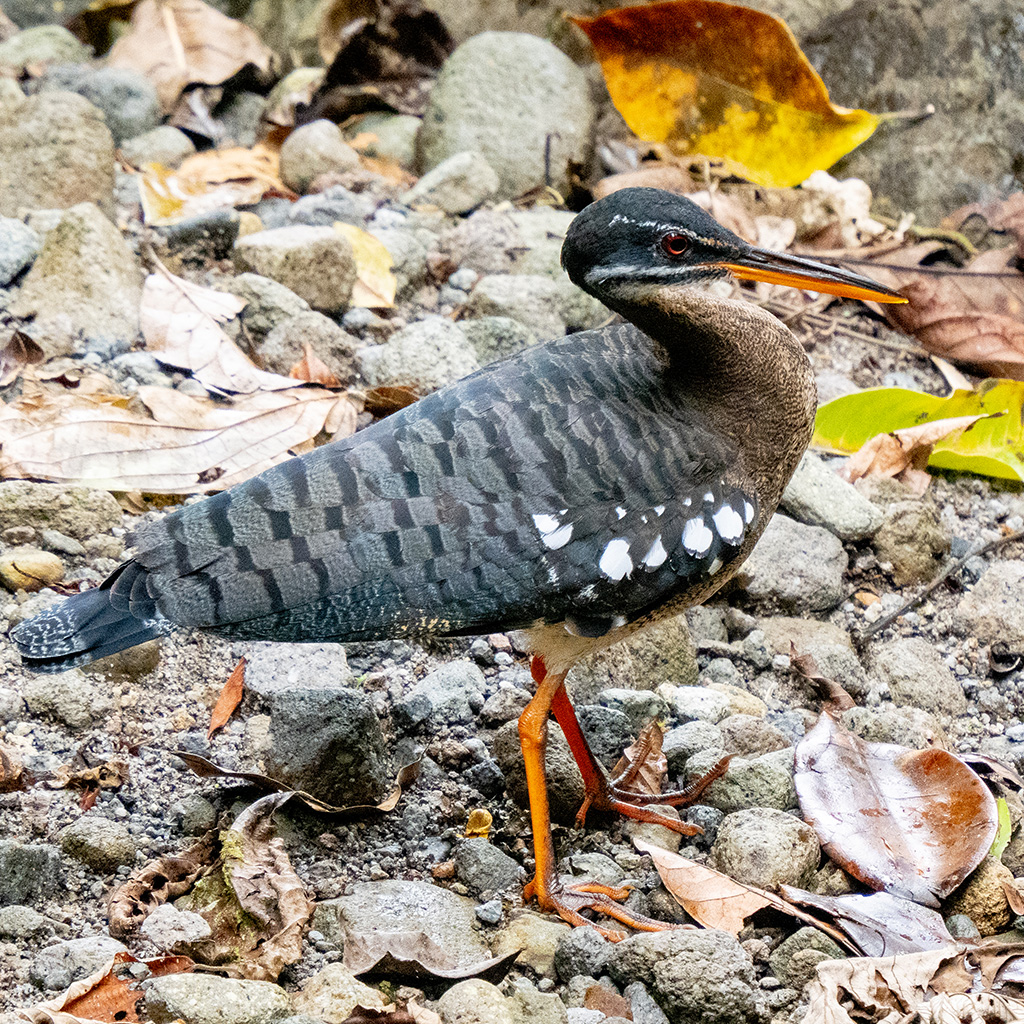Canopy Lodge is located just north of the village of El Valle de Anton (marked ‘A’ on the map below) in the Cocle province about a two hour drive from Panama City and 20 km north of the Atlantic coast. The lodge sits in the middle of a crater of an inactive volcano and is beside a fast-flowing stream coming down from the surrounding mountains.


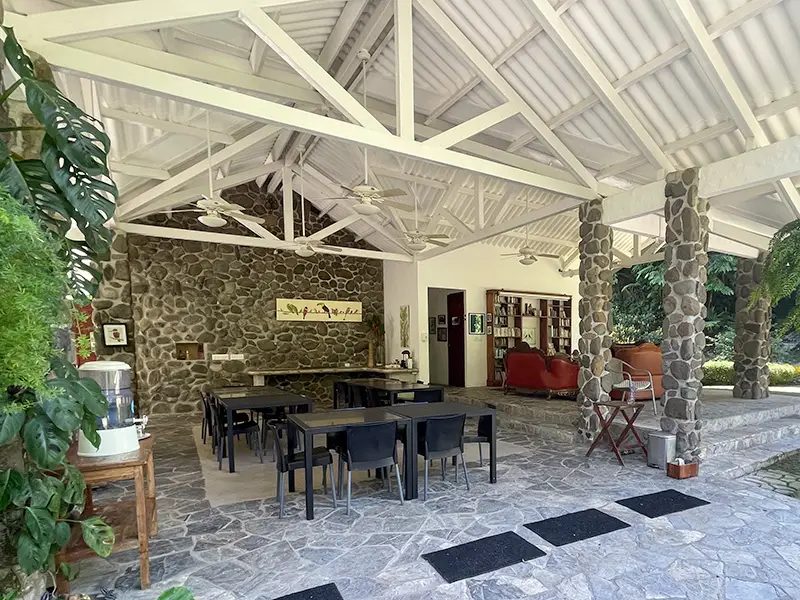
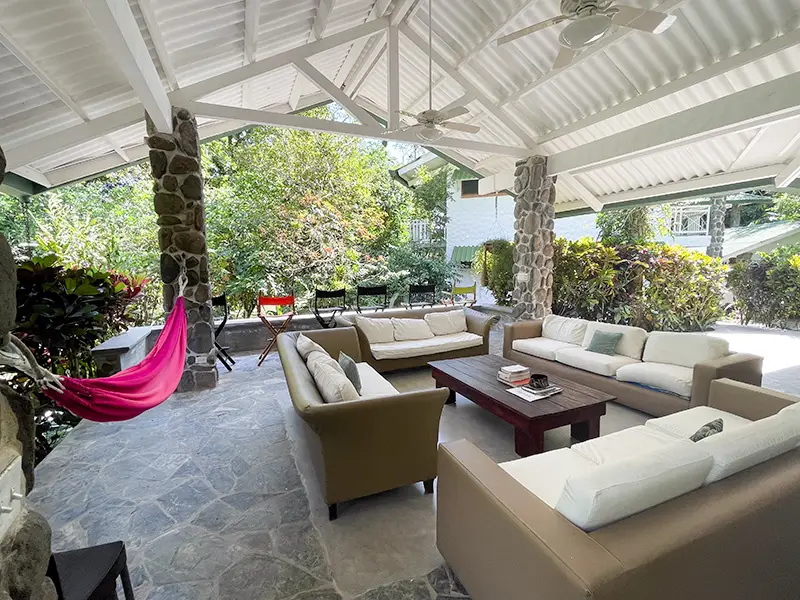
We arrived at the lodge in the late morning of 12 February and were shown to our comfortable room not far from the dining area at the front of the lodge. Following a short rest after lunch, we went out for our first birding session along the La Mesa Road, which runs north from the lodge (‘B’ on the map). We saw some common birds, such as the Blue-grey Tanager, Southern Lapwing, Tropical Kingbird and Cattle Egret, but also some species that are more limited in range, such as the Tawny-capped Euphonia and Clay-coloured Thrush.
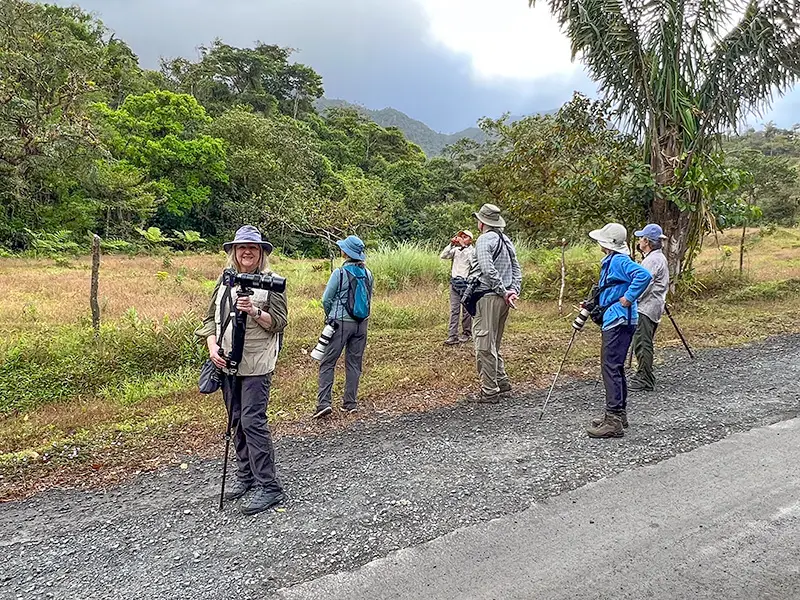
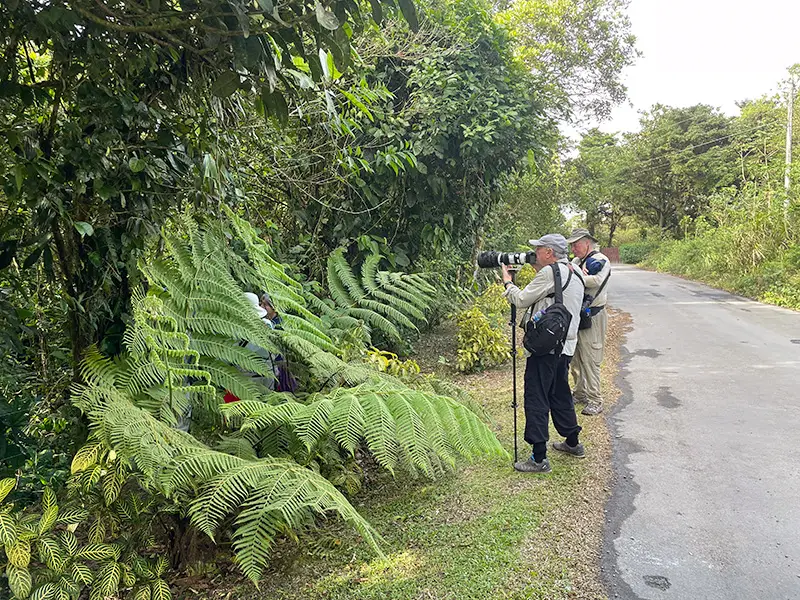
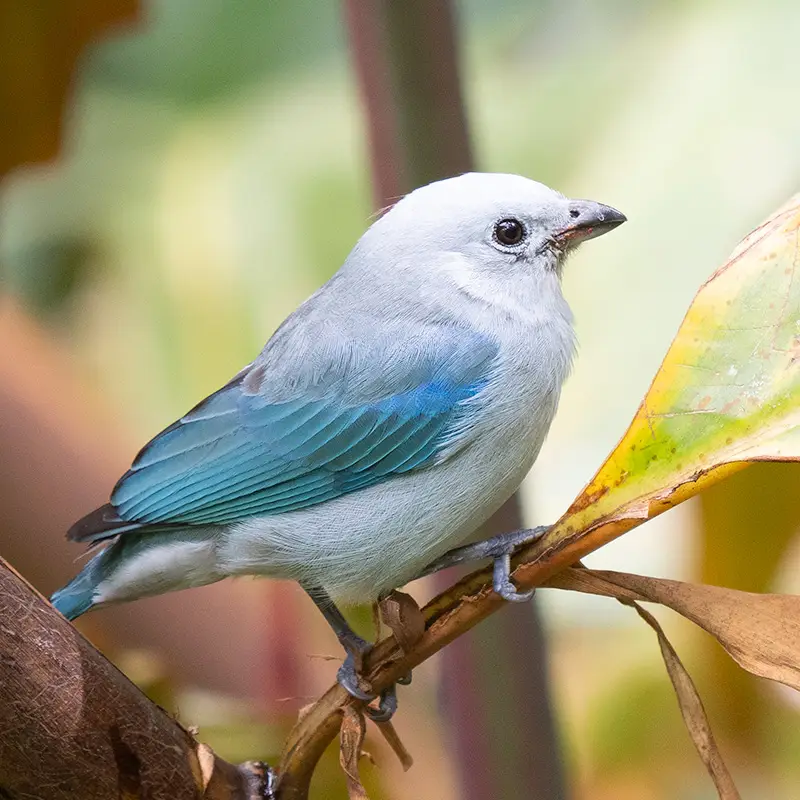
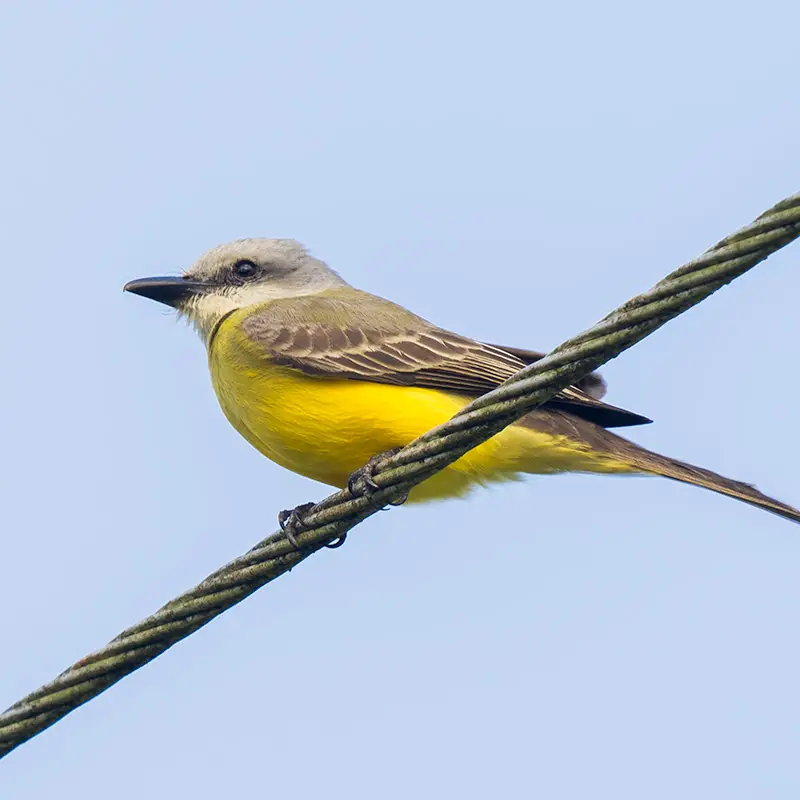


As we returned to the lodge we saw our first sloth, the Brown-throated Three-toed Sloth, in one of the trees beside the road.

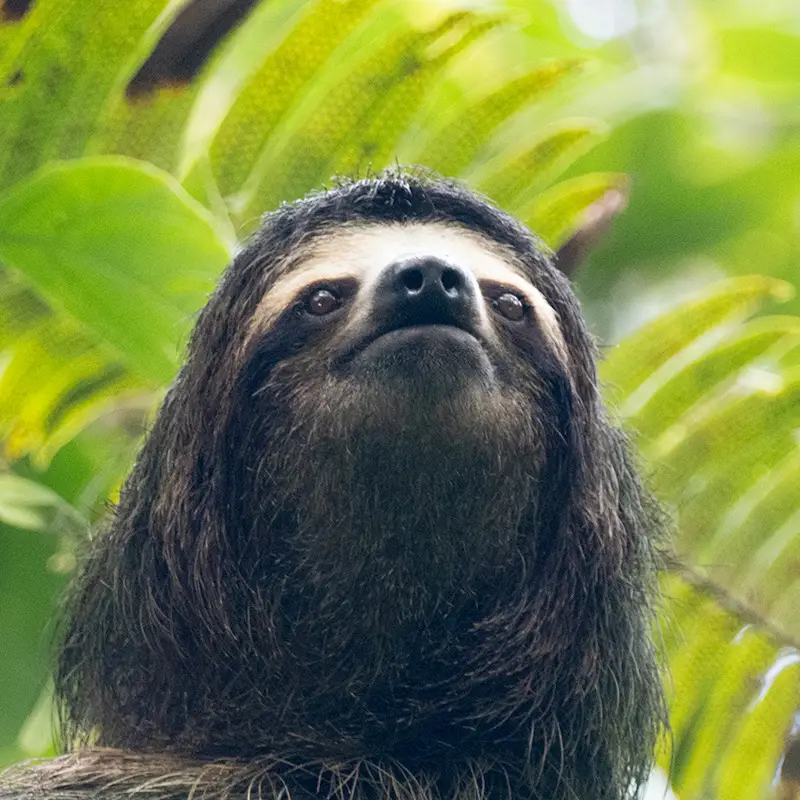
On day 2 (13 February) we had a full day working our way along the La Mesa Road towards the Caribbean coast of the country. We saw lots of good birds, with a highlight being two species of puffbird, the barred and the white-whiskered. Both have a range that is limited to Central and Northwest South America. It was also good to see Olive-striped Flycatcher, Crowned Woodnymph, Long-tailed Tyrant and Sociable Flycatcher.

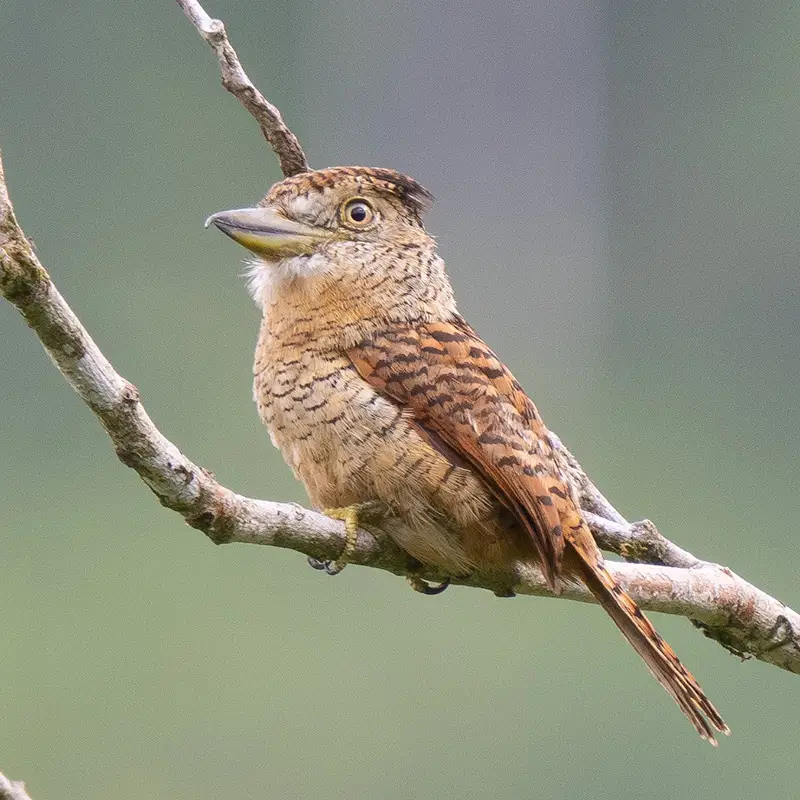


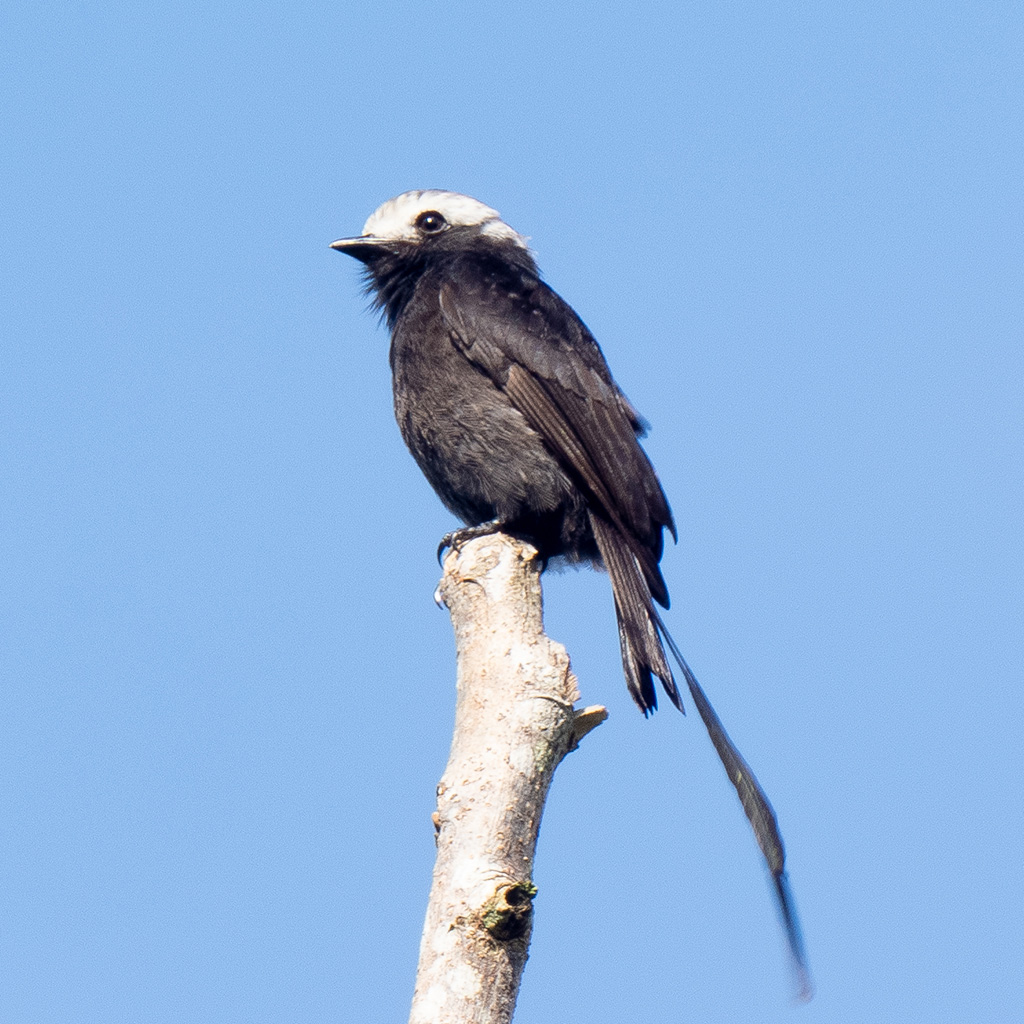
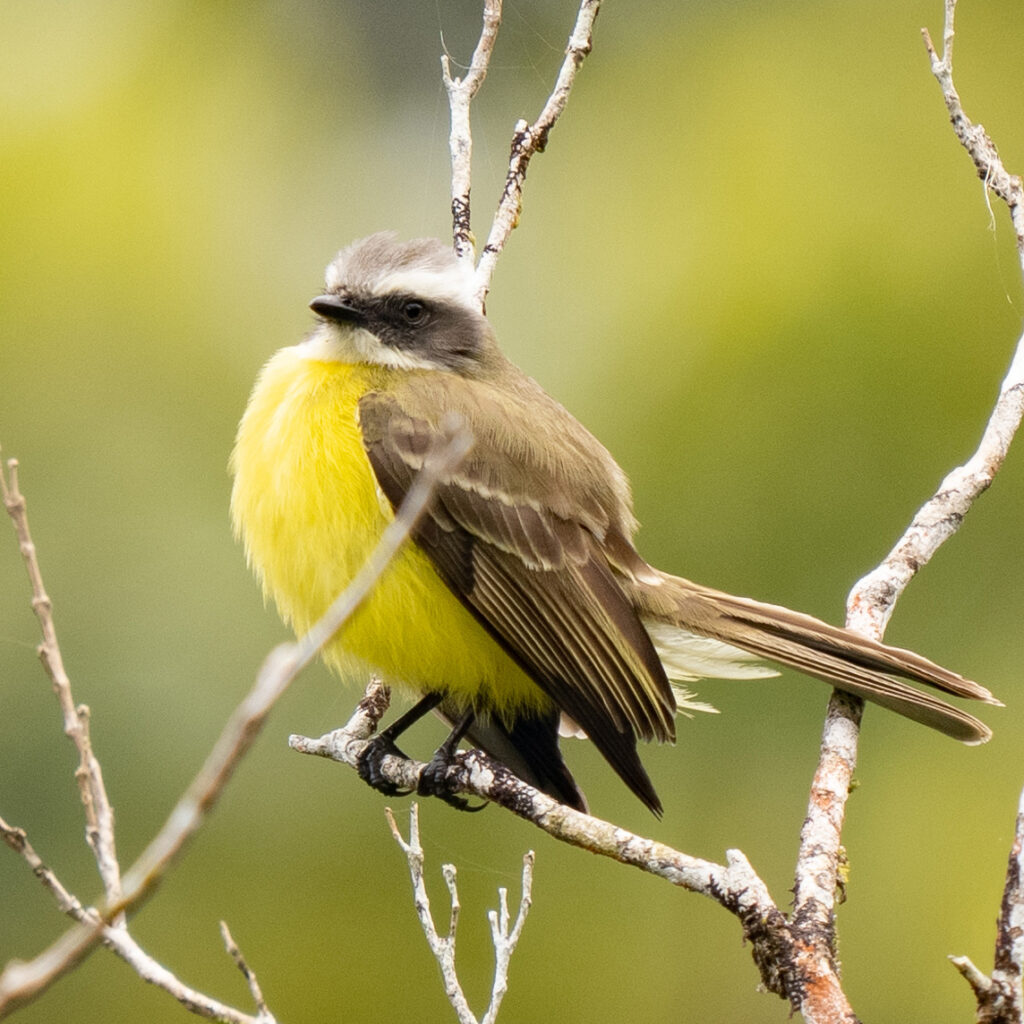
The La Mesa Road was extremely quiet with virtually no traffic, making it ideal for birding.
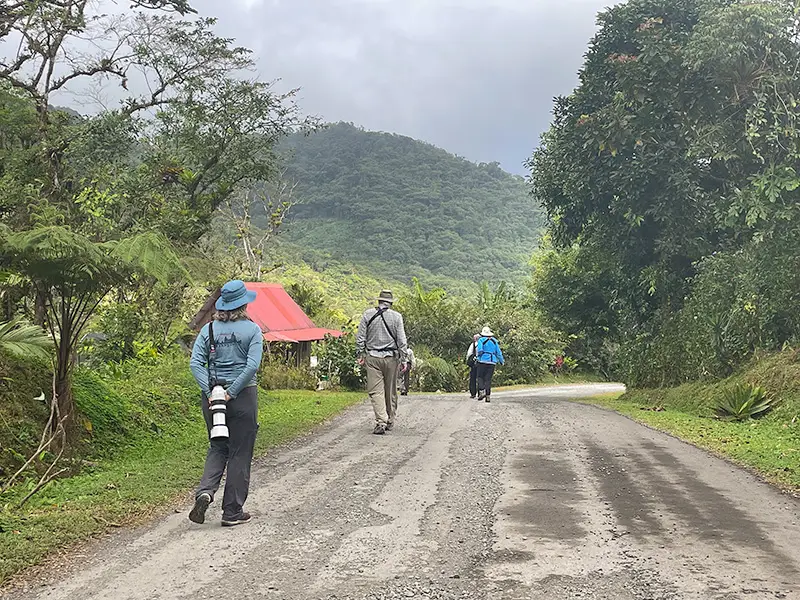
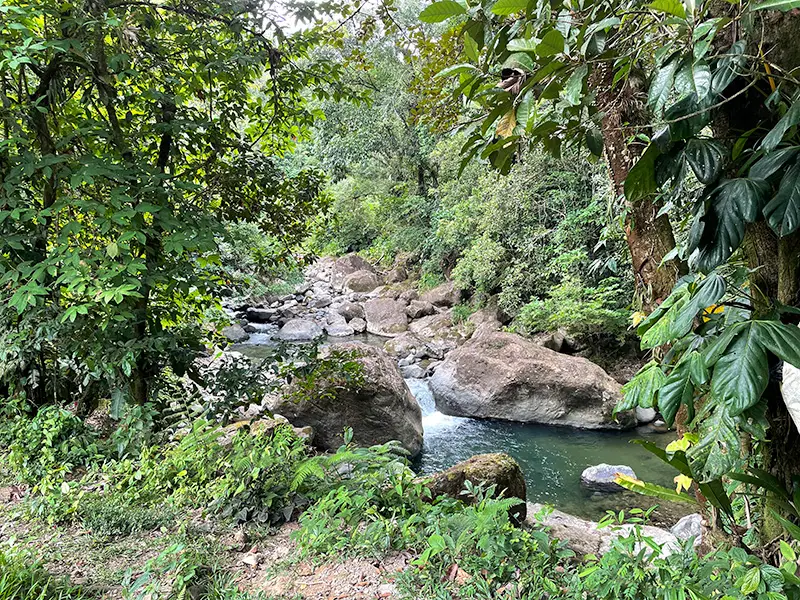
The morning of 14 February (day 3) saw us back on the La Mesa Road trying to get a few more new bird species. Before we set off we saw a spectacular Keel-billed Toucan high in a tree close to the lodge. While in the fast-flowing stream close to the lodge was saw a Louisiana Waterthrush, a bird that spends the winter in Central America and migrates to the eastern USA to breed in spring.
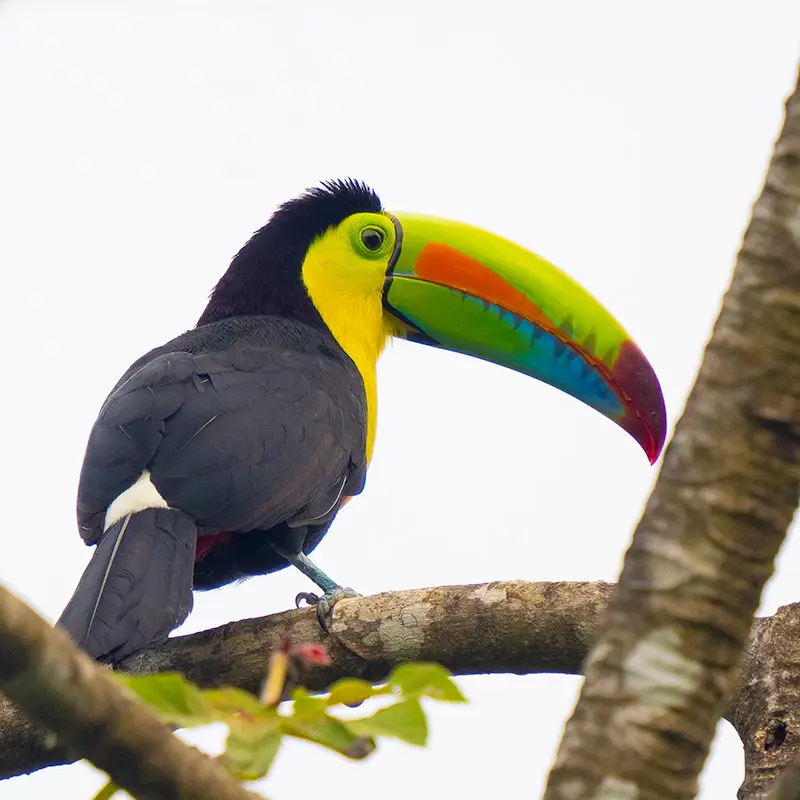

Once we were on the La Mesa Road we took a couple of side-trails and had good sightings of Slaty-tailed Trogon, Bicoloured Antbird, Green Hermit and Red-faced Spinetail.
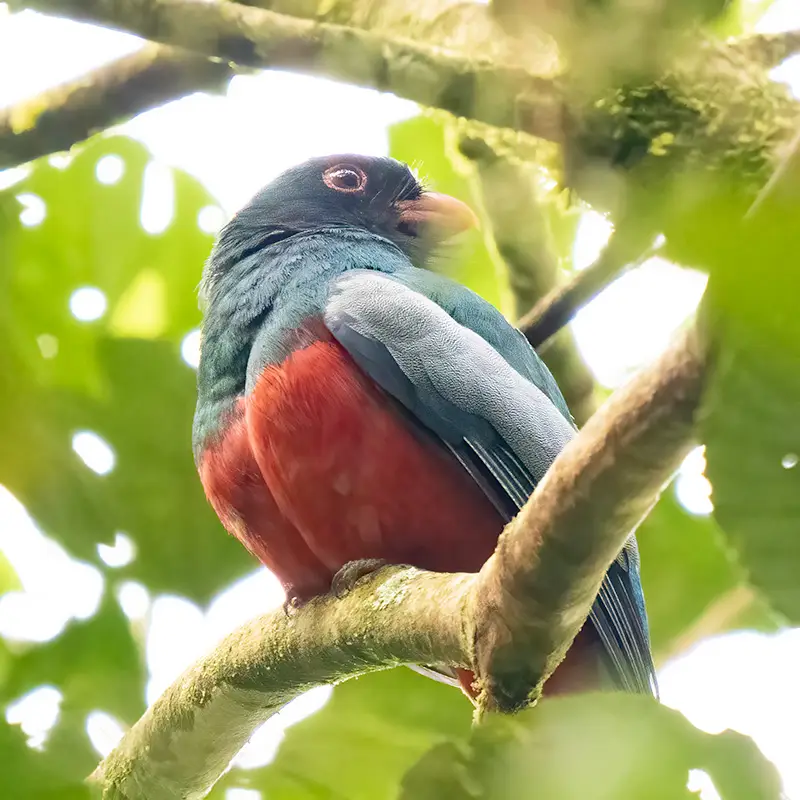
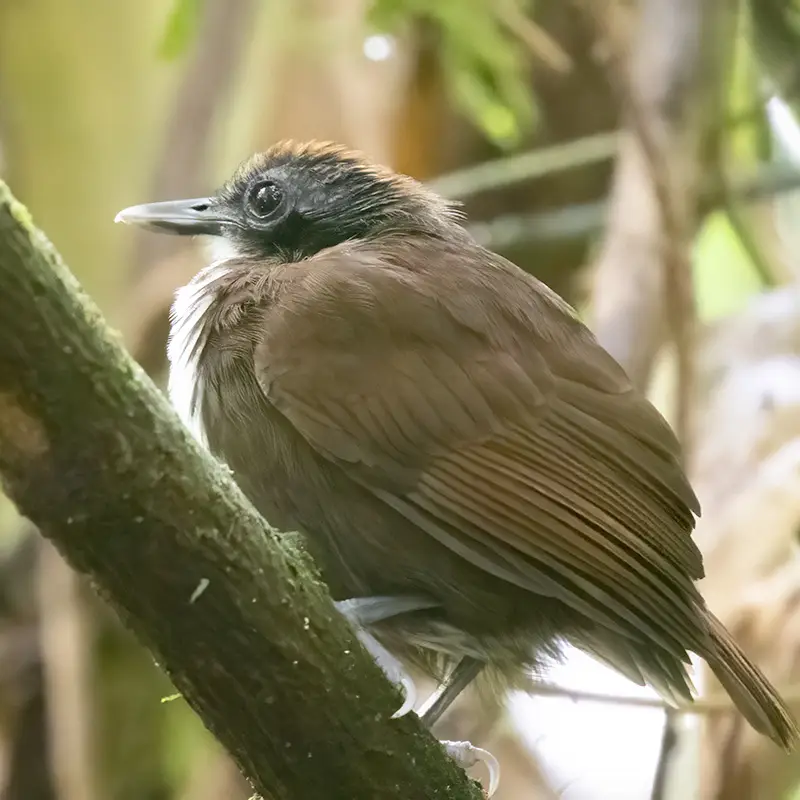
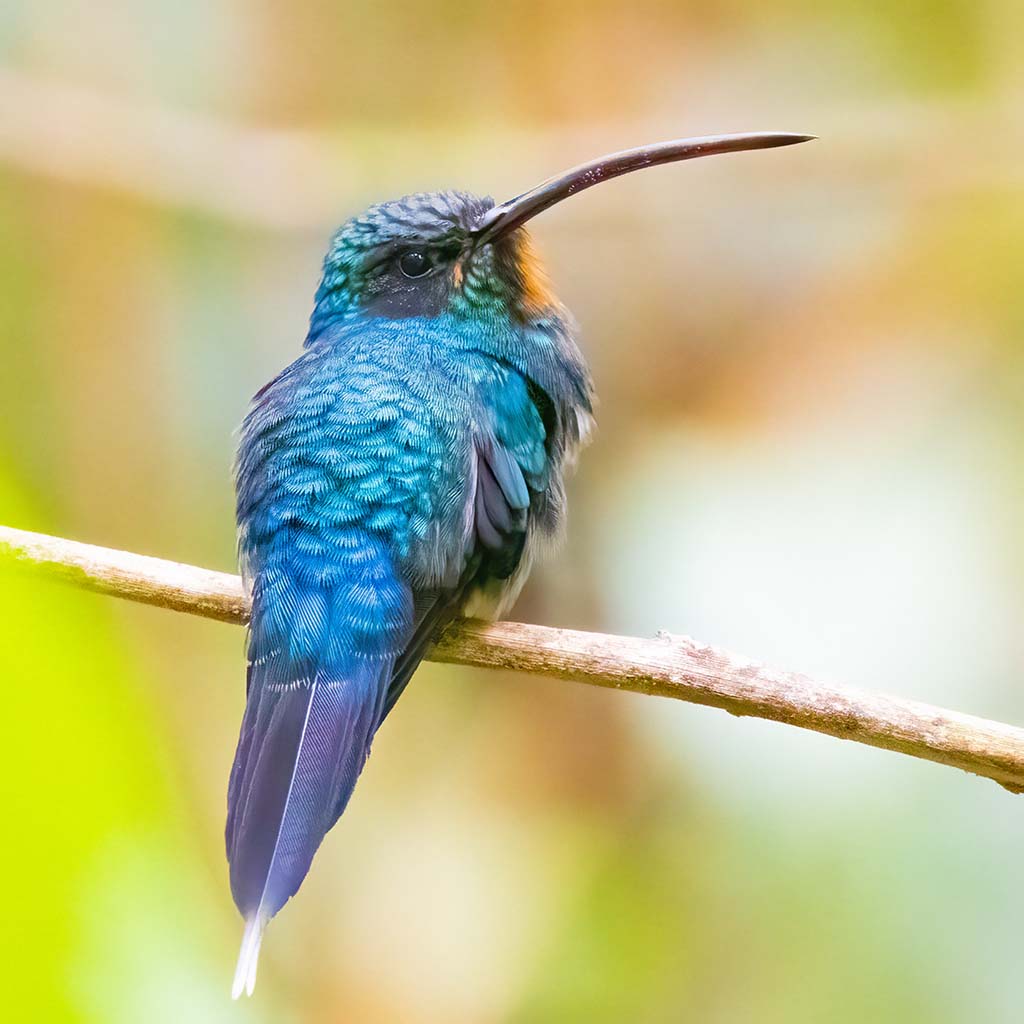
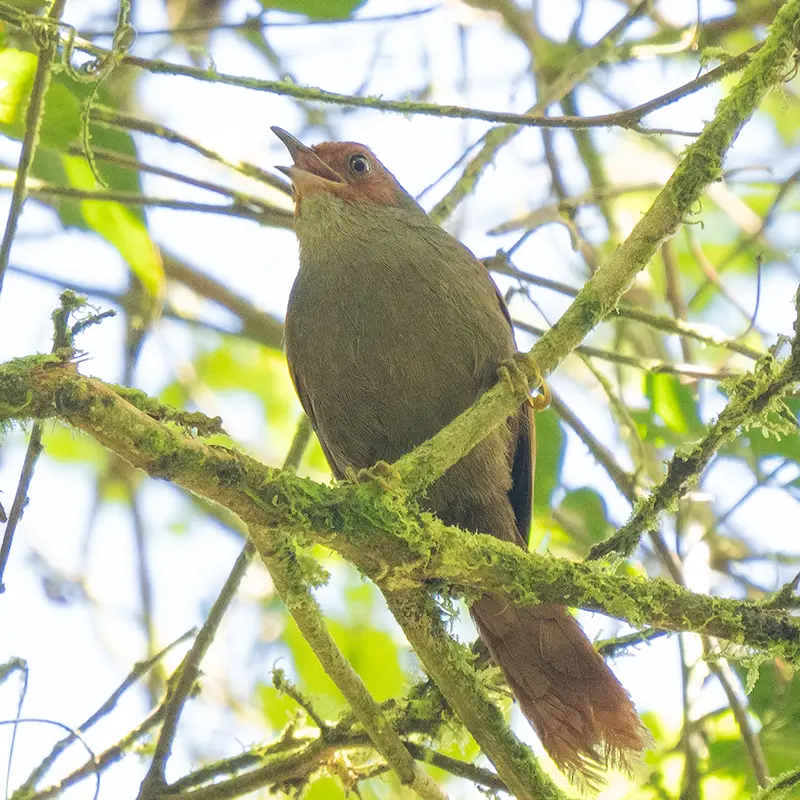
After lunch we walked along a quiet minor road to the southwest of Anton Valley (‘D’ on the map), which yielded a number of new birds. A memorable sighting was of a Lesson’s Motmot that perched for an extended period on a gate. We also came across a pair of Spectacled Owls roosting in a tree, although one was mostly obscured by branches. While walking along this road we also had our first sighting of a Panama Flycatcher, a bird that is not just found in Panama but can be seen in Venezuela, Colombia and Ecuador.
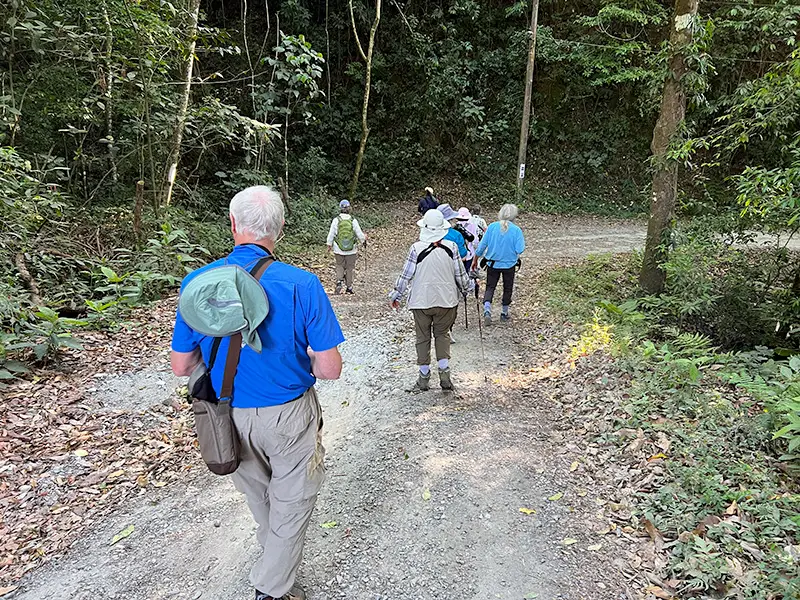
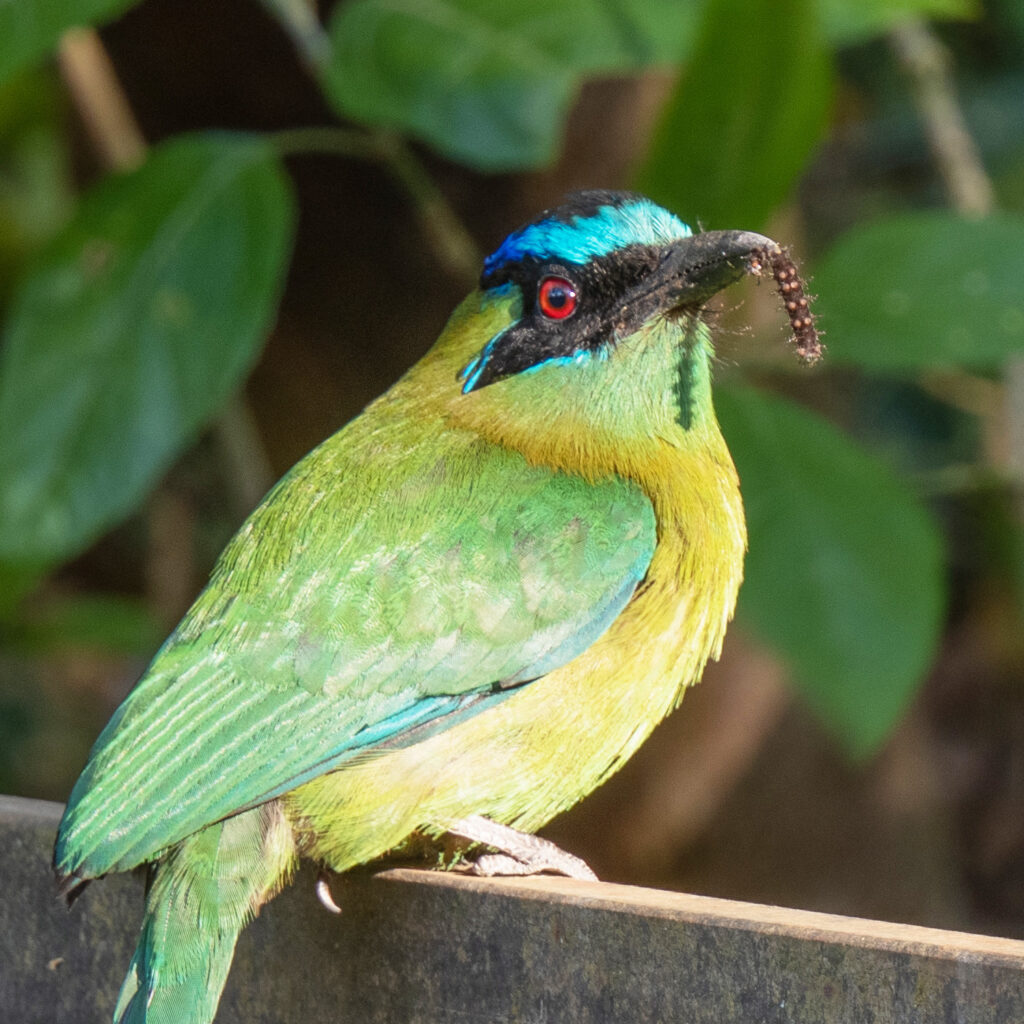

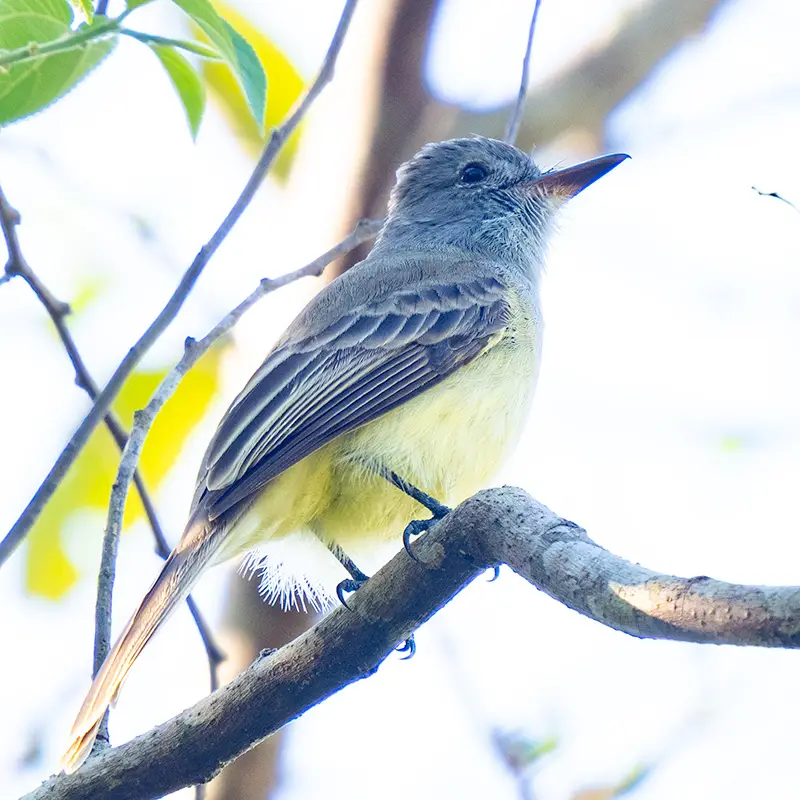
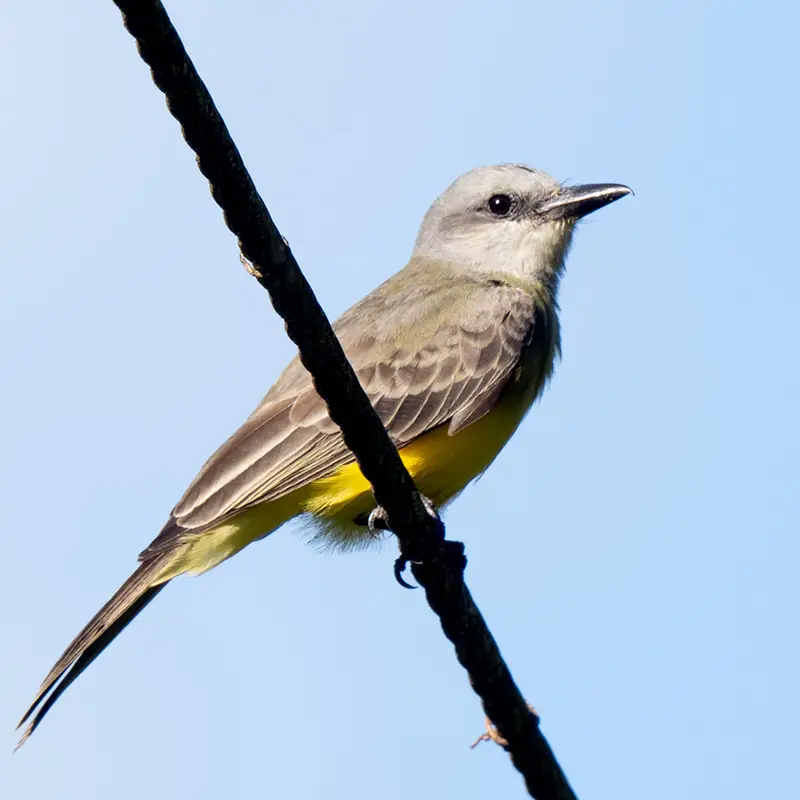
On 15 February we travelled to the Pacific Coast, spending several hours at a beach house owned by the lodge where we also had lunch. But we did stop several times on our journey to the coast and on the return in the late afternoon. Highlights on the way out were Wedge-tailed Grass-finch, Ferruginous Pygmy-owl, Veraguan Mango and Lineated Woodpecker.
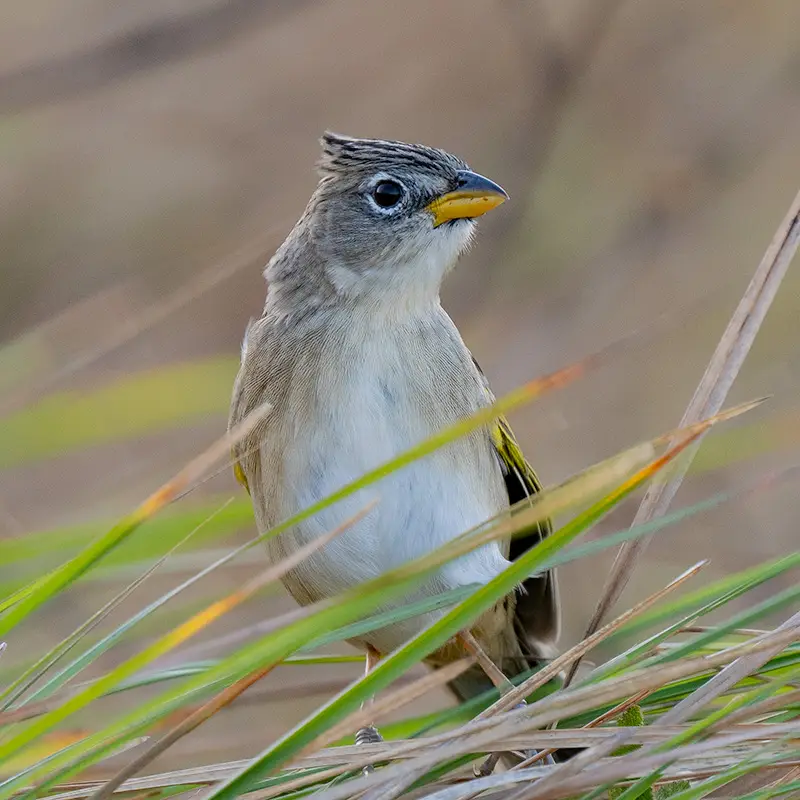
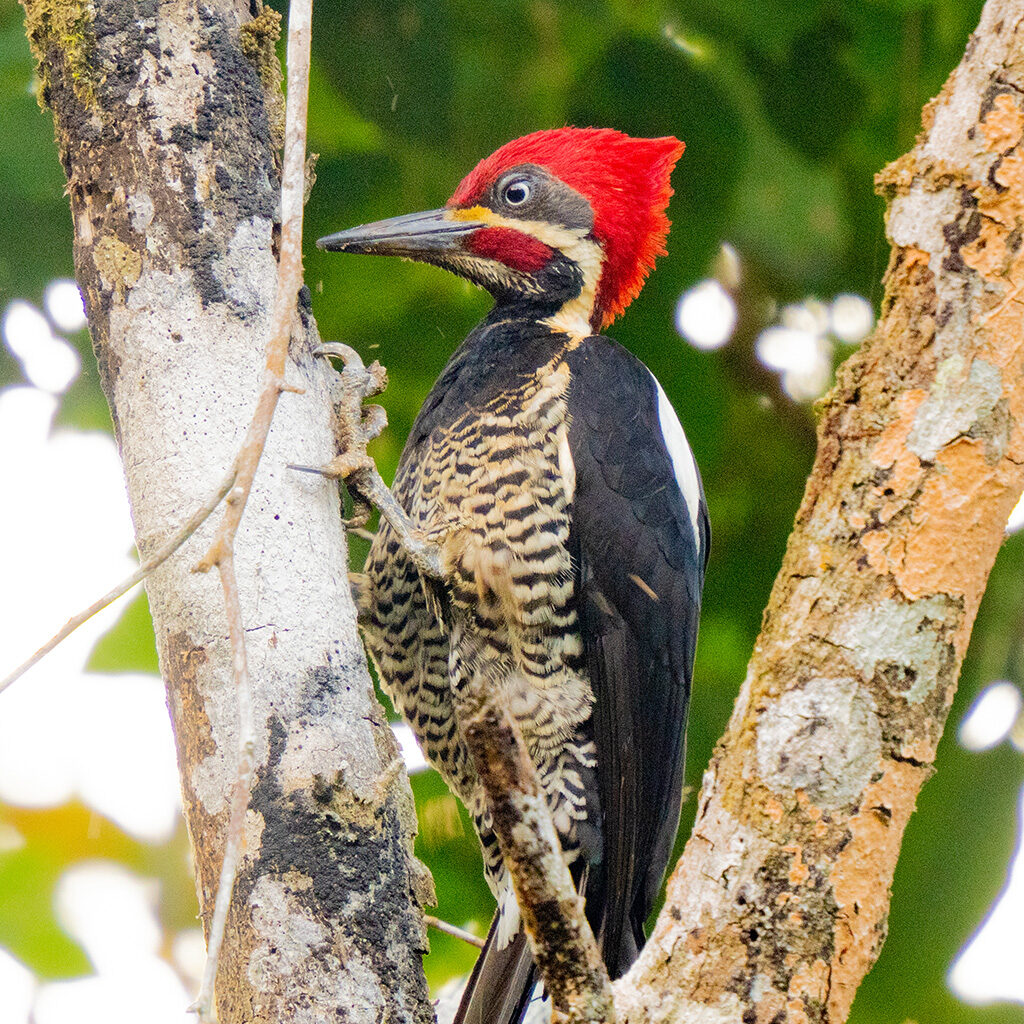
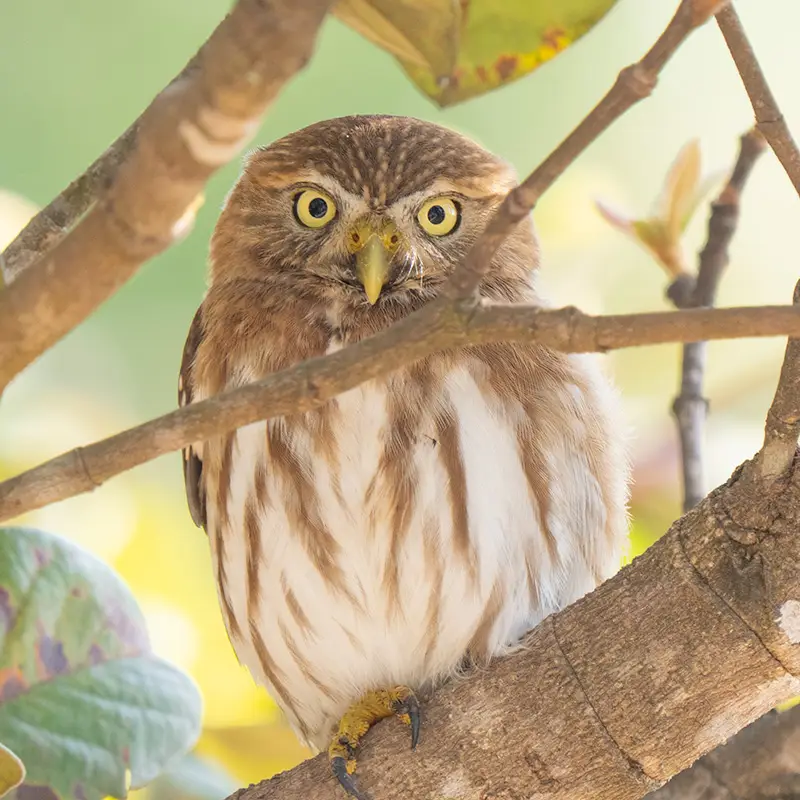
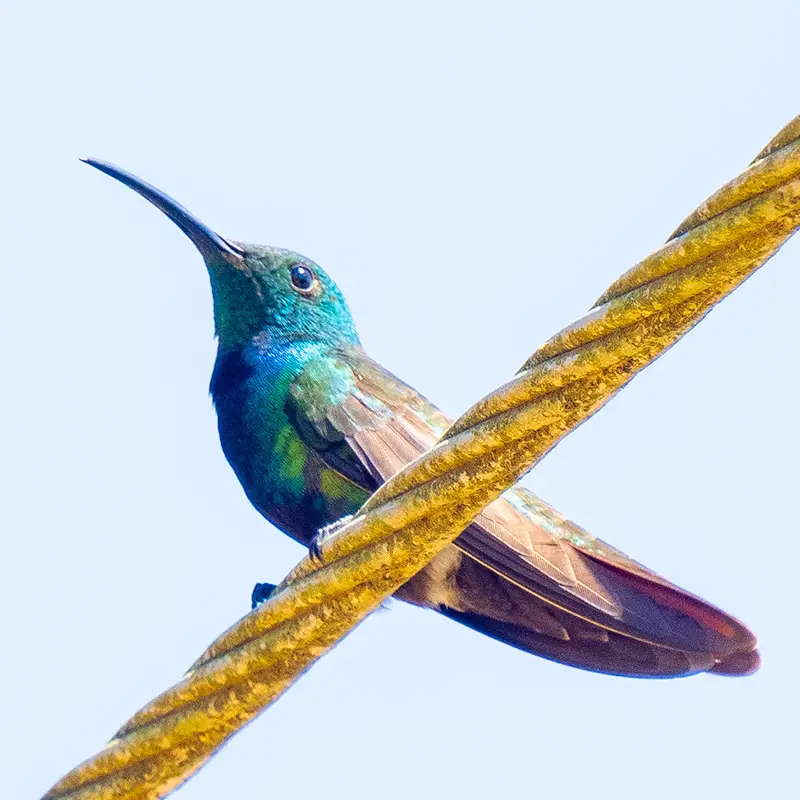
We arrived at the beach house in Playa Santa Clara (‘C’ on the map) just before 1 PM and did some birding on the beach before we had lunch. Lots of Magnificent Frigatebirds were flying over, while on the beach we had Sandwich and Royal Tern.

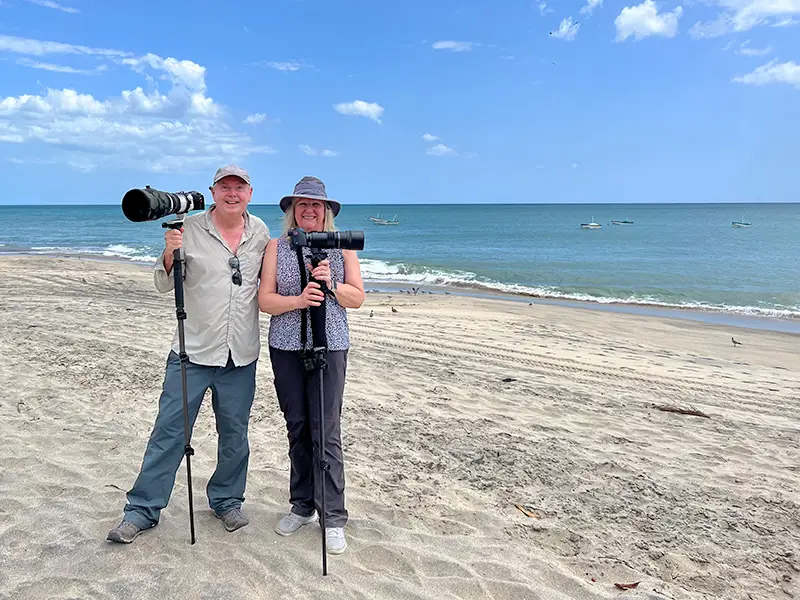
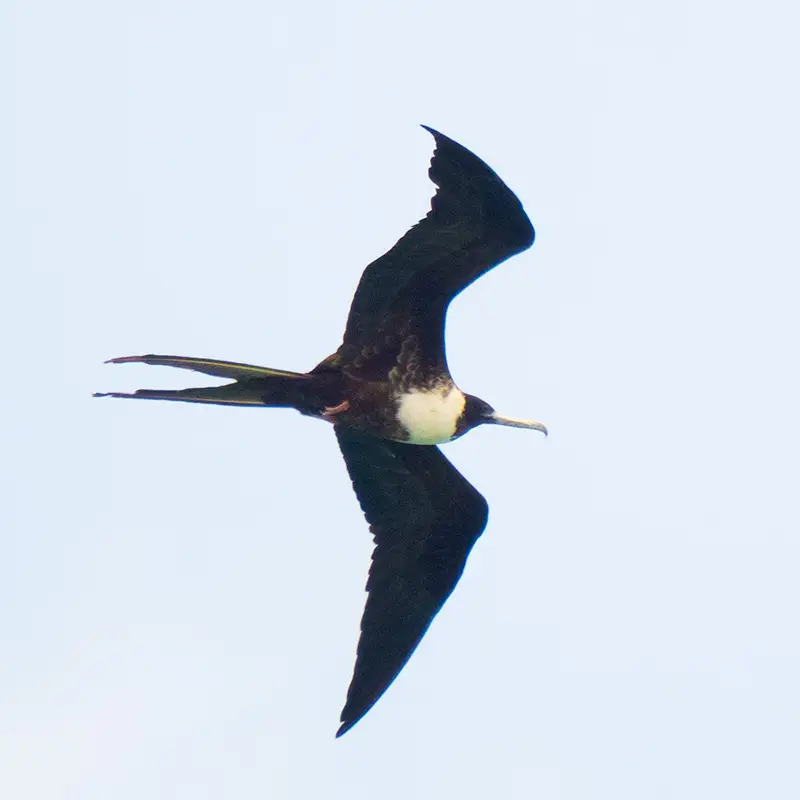
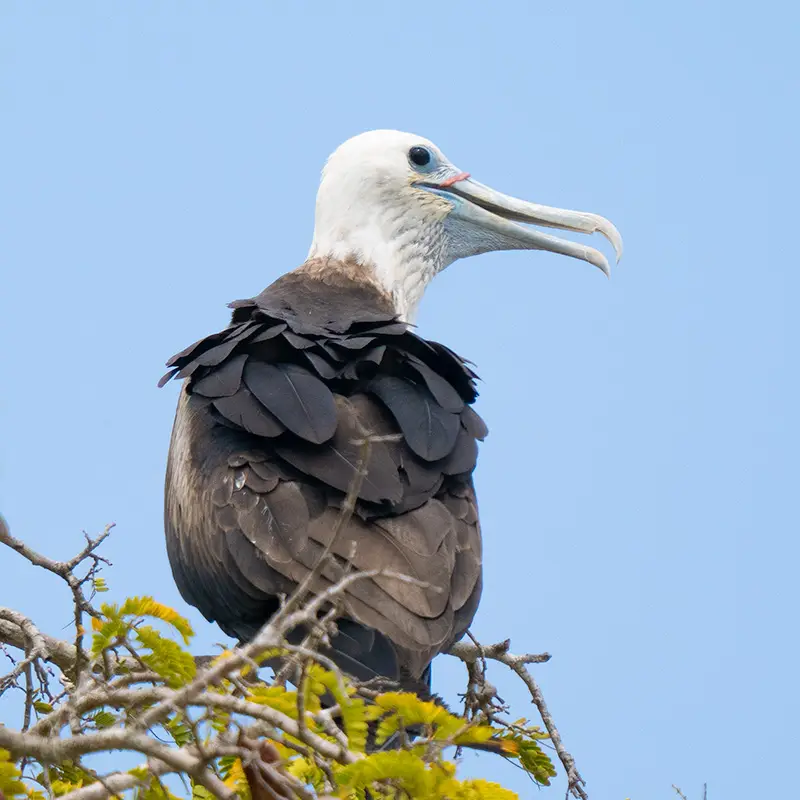
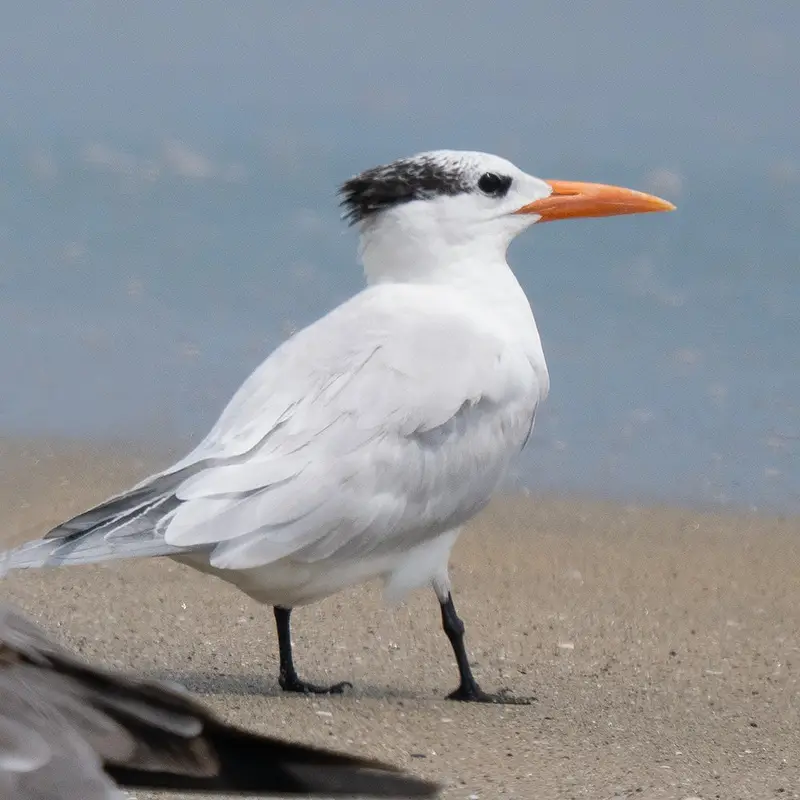

After an excellent lunch we started the journey back to the lodge, stopping at a couple of good birding locations on the way. We didn’t spend as long birding as in the morning, but we did have good views of Roadside Hawk and Straight-billed Woodcreeper.

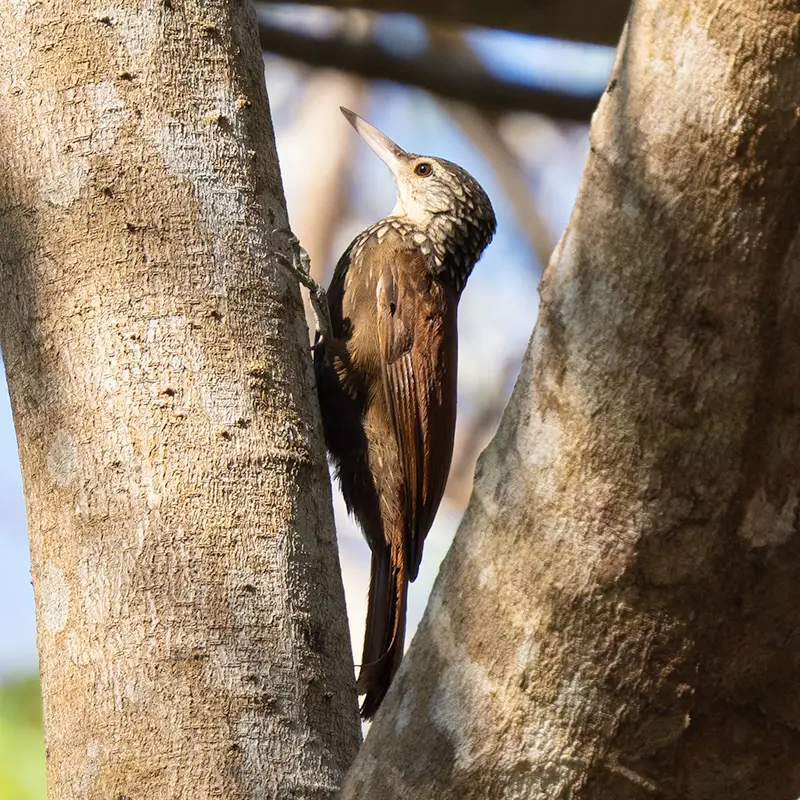
Canopy Lodge had a number bird feeding tables that drew in a good selection of the more common and people-friendly birds of the region. Each morning before setting off for our day’s birding we would spend a few minutes trying to photograph some of these colourful birds.
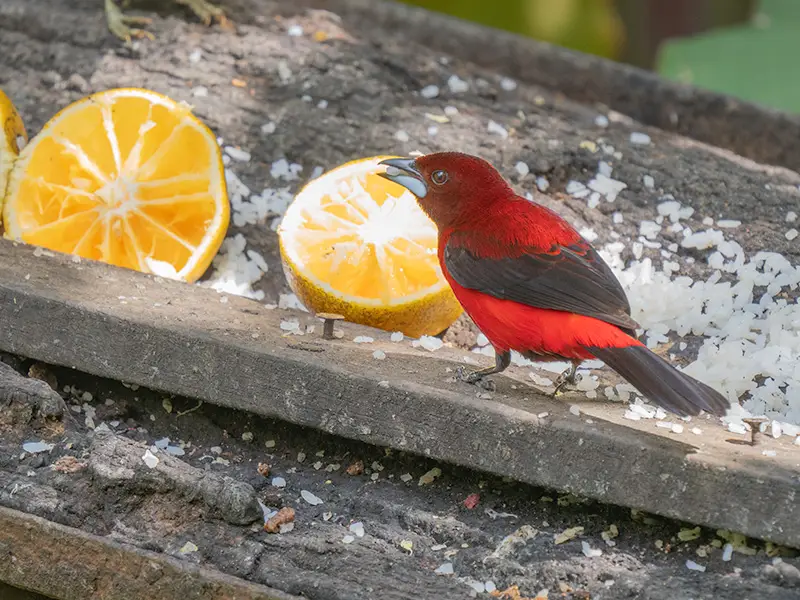
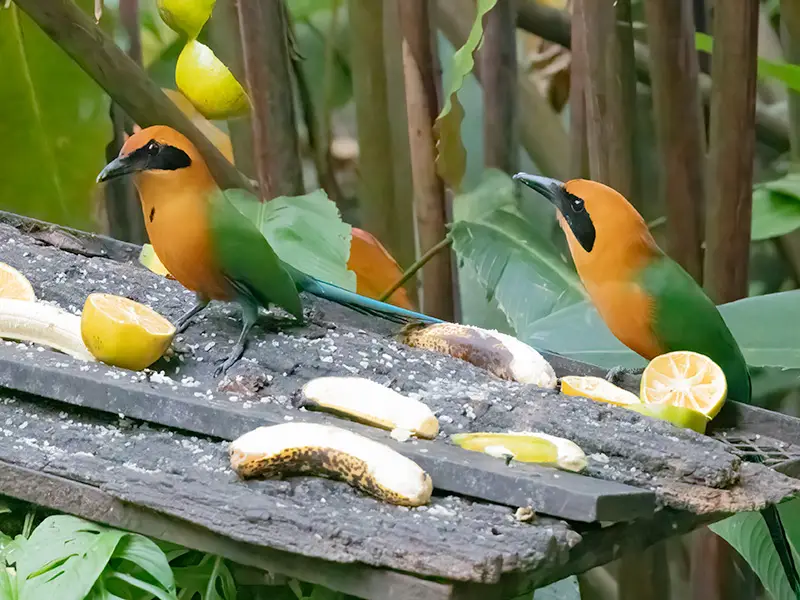
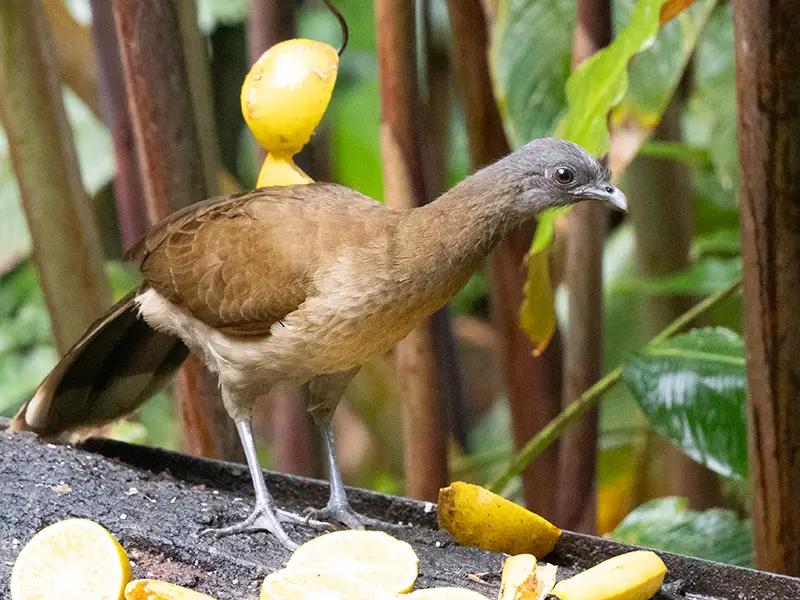

The morning of 16 February saw us visiting the new destination of Valle Chiquito, which is located a few kilometres to the east of Anton Valley (‘E’ on the map). We saw some birds we knew from visits to the USA, such as the Black-and-White Warbler and Rose-breasted Grosbeak, but also some new birds for us, including the Blue Ground Dove and Tody Motmot. A Squirrel Cuckoo also posed well for us.
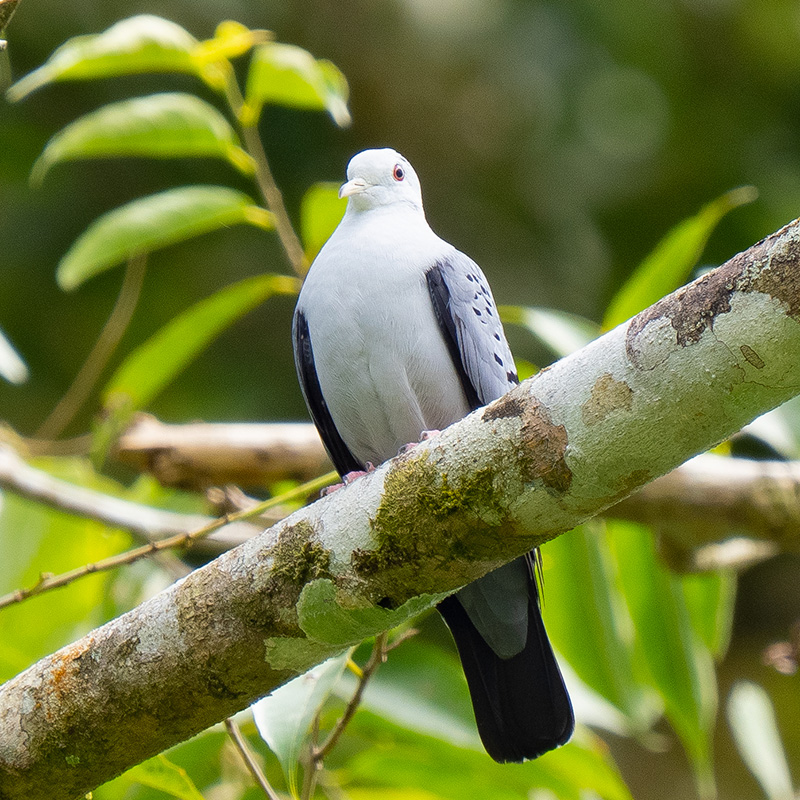


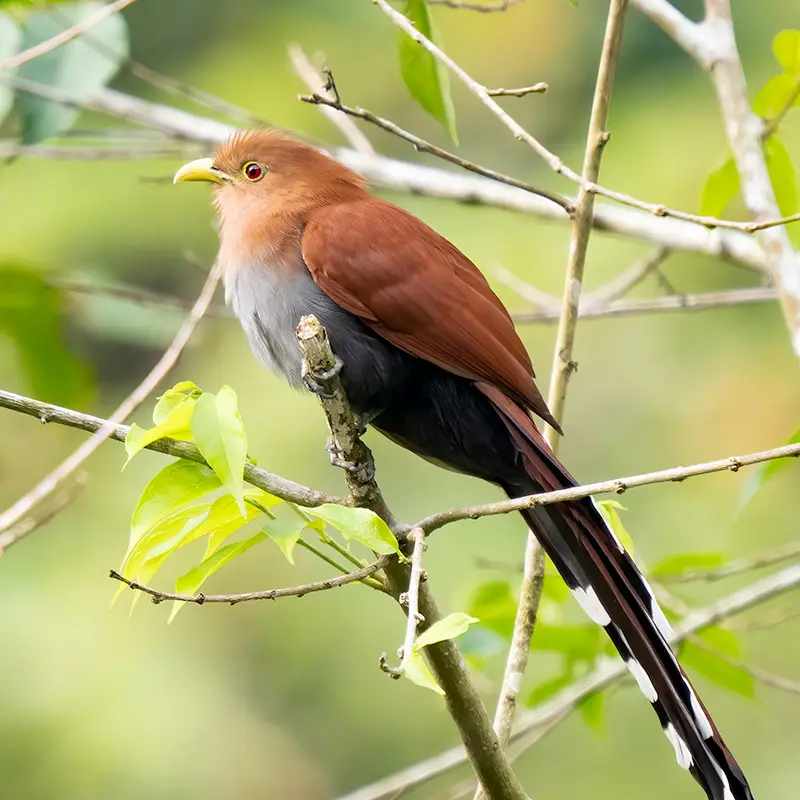
After lunch and a short rest we drove west from the lodge to the Sofre area (‘F’ on the map). We had a very productive afternoon with 23 bird species photographed, with the highlights being Lesser Greenlet, Rufous-and-White Wren, Plain-coloured Tanager, Crimson-backed Tanager, Boat-billed Flycatcher and White-shouldered Tanager.
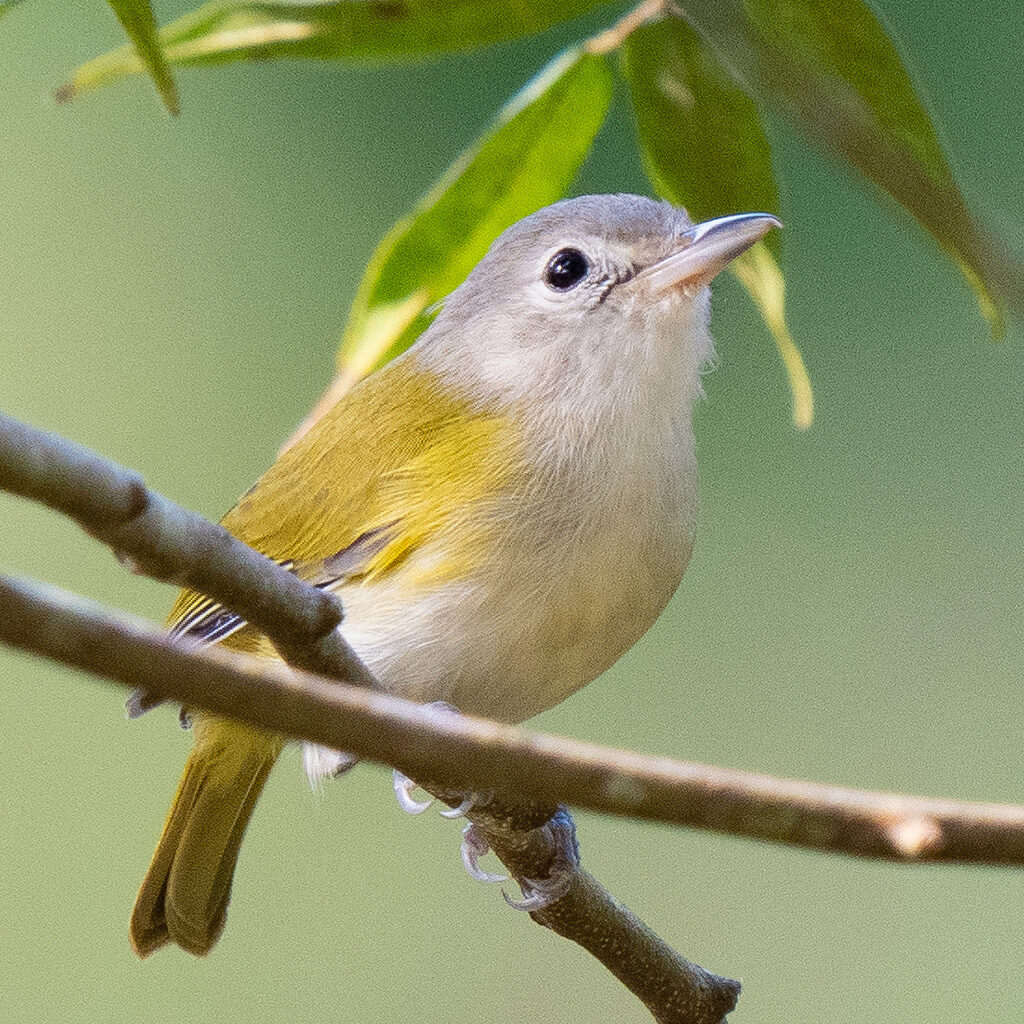
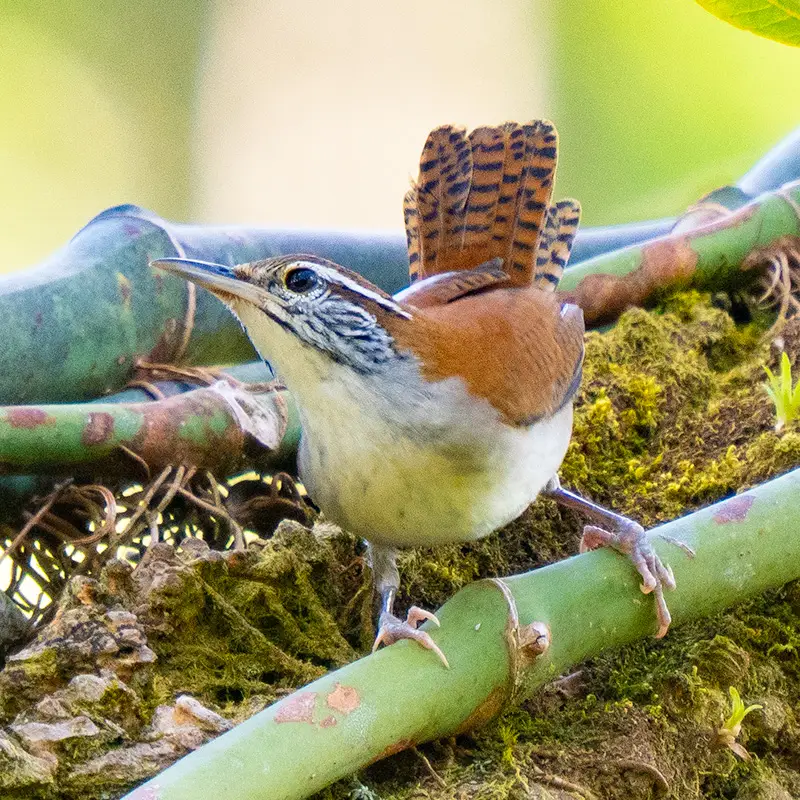
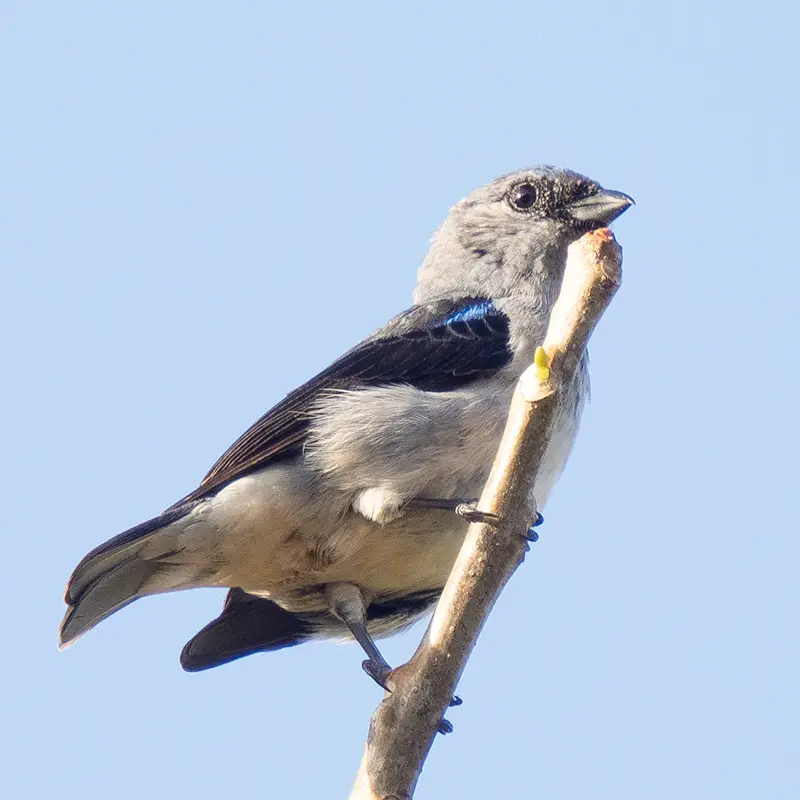
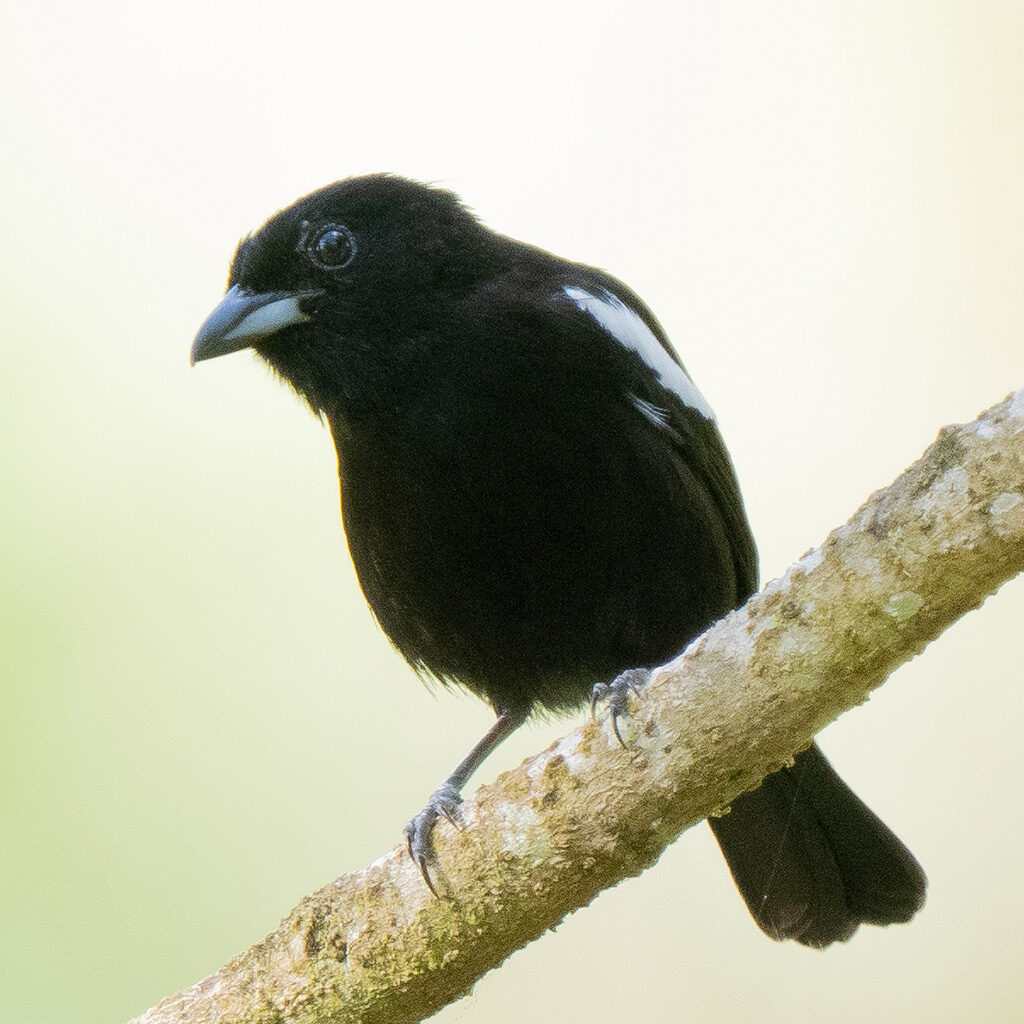
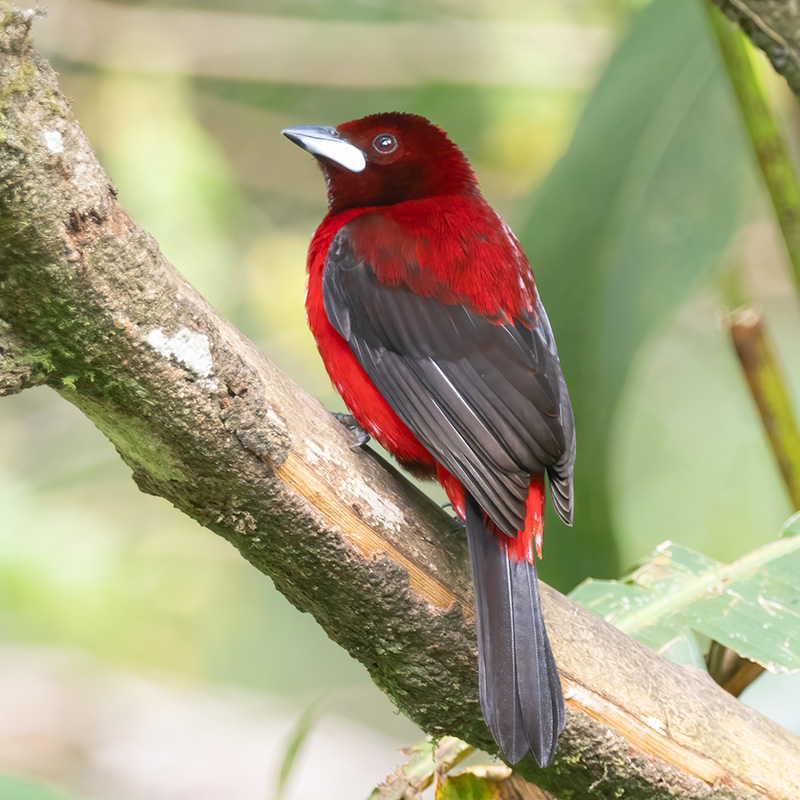
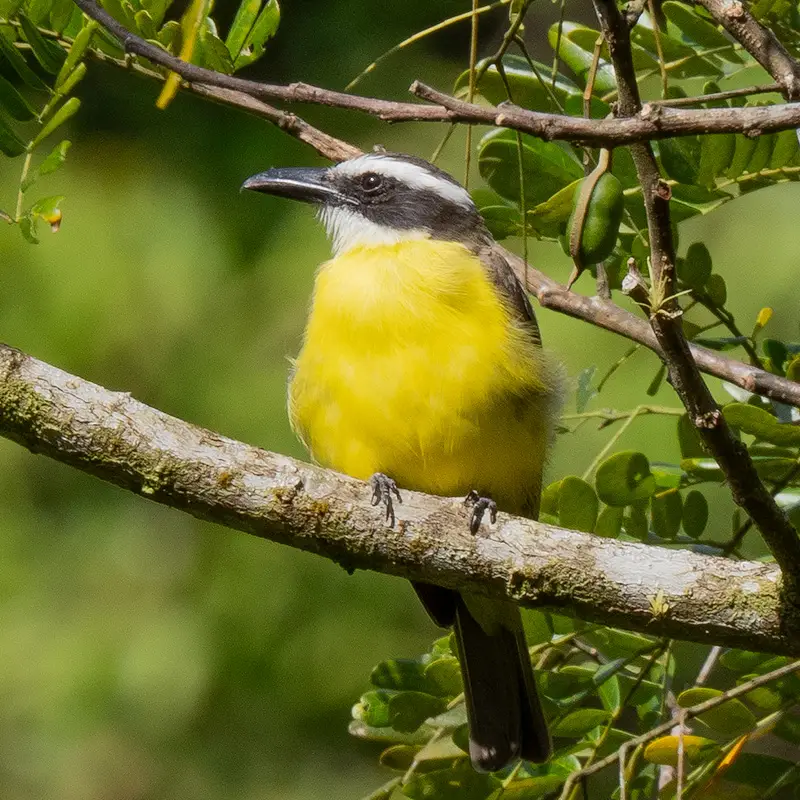
We spent the whole of 17 February visiting some higher elevation birding sites to the northeast of the lodge around the Altos del Maria area (‘G’ on the map). This was a very different environment to those we’d experienced on previous days and we had poorer weather, with some light rain at times. But it was very productive for birds. On the way up we saw a very cute Hoffman’s Two-toed Sloth by the side of the road and we all dashed out to get photographs. As we drove up the light rain and cloud made photography rather difficult but we did get good photos of a Spotted Woodcreeper with a bug.
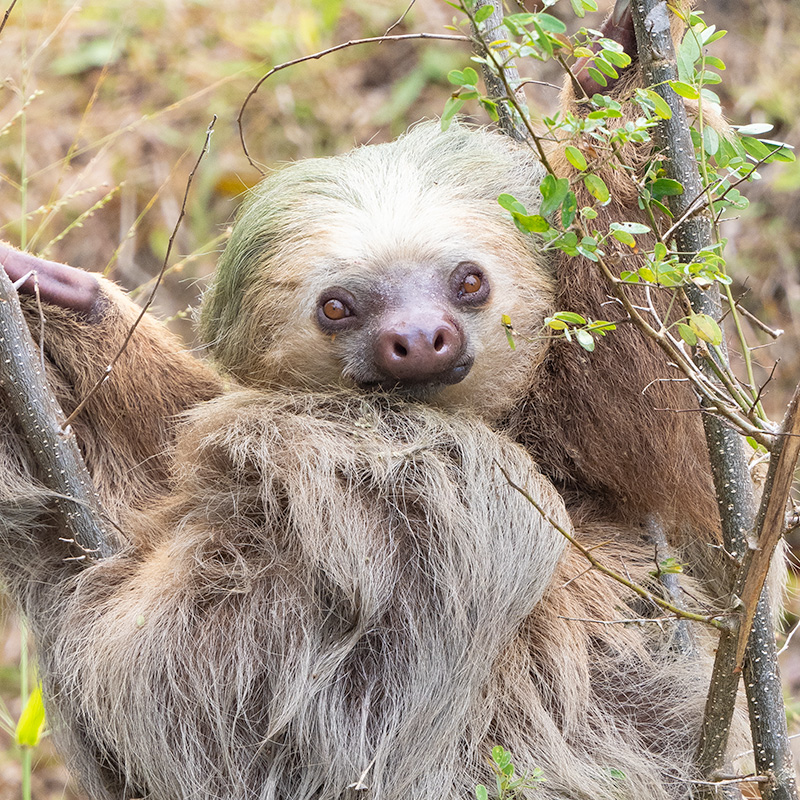
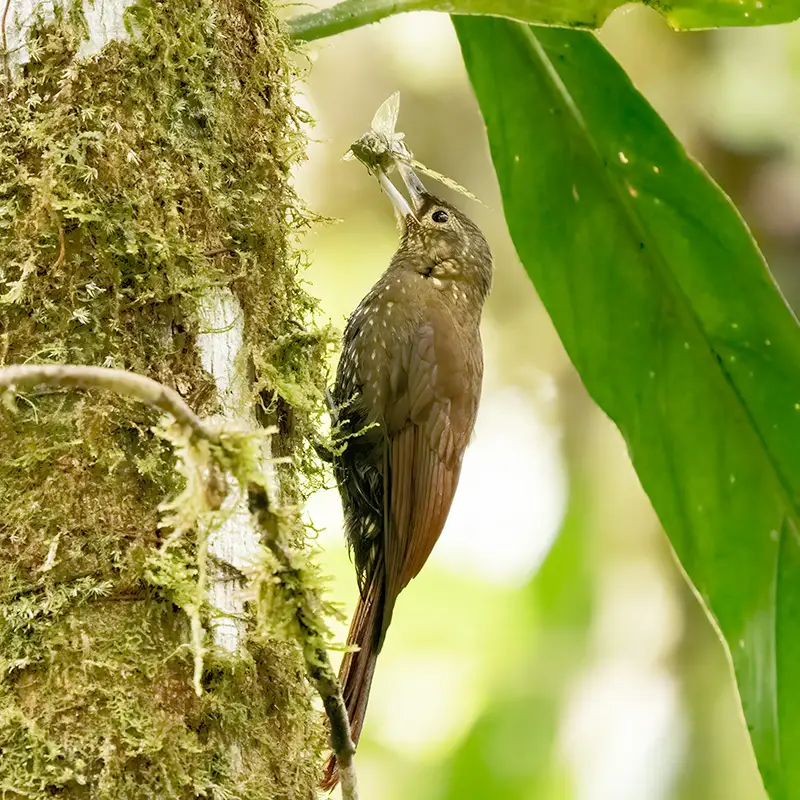
By late morning the rain had stopped and in fair conditions we visited the recreational area in the Valle Bonito development region in the Atmos del Maria mountains. The area has a path around a lake and a section through a forest, giving a variety of birding habitats.
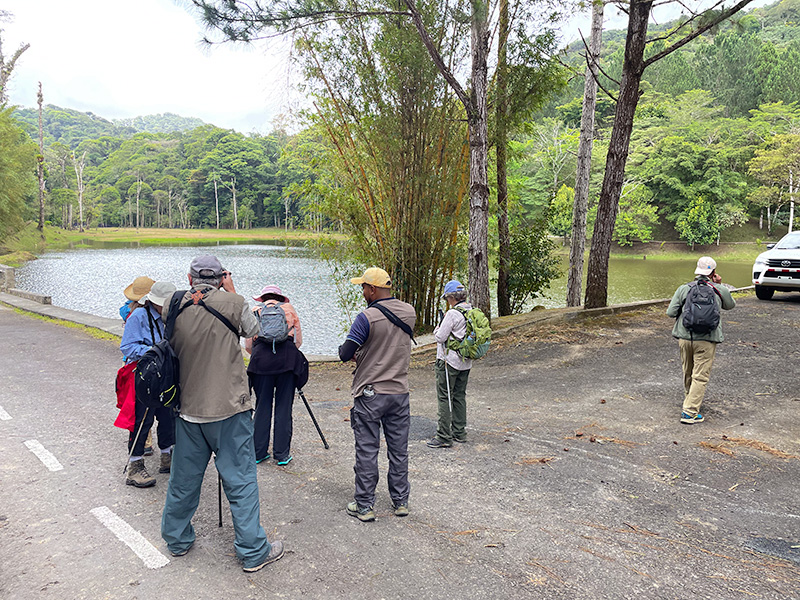
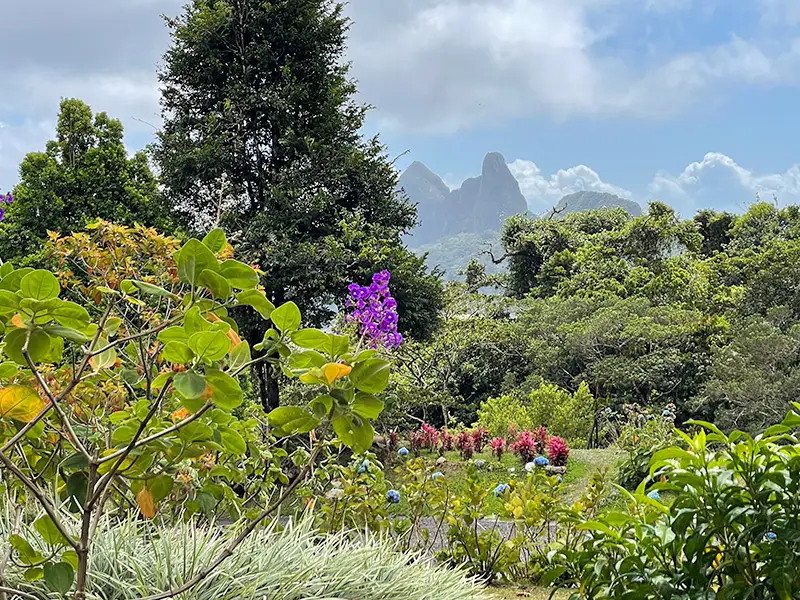
Before we set off around the lake we saw a Spotted Barbtail, a bird found only at higher elevations in Panama. A striking White-rumped Manakin was also a highlight, along with Silver-throated Tanager.
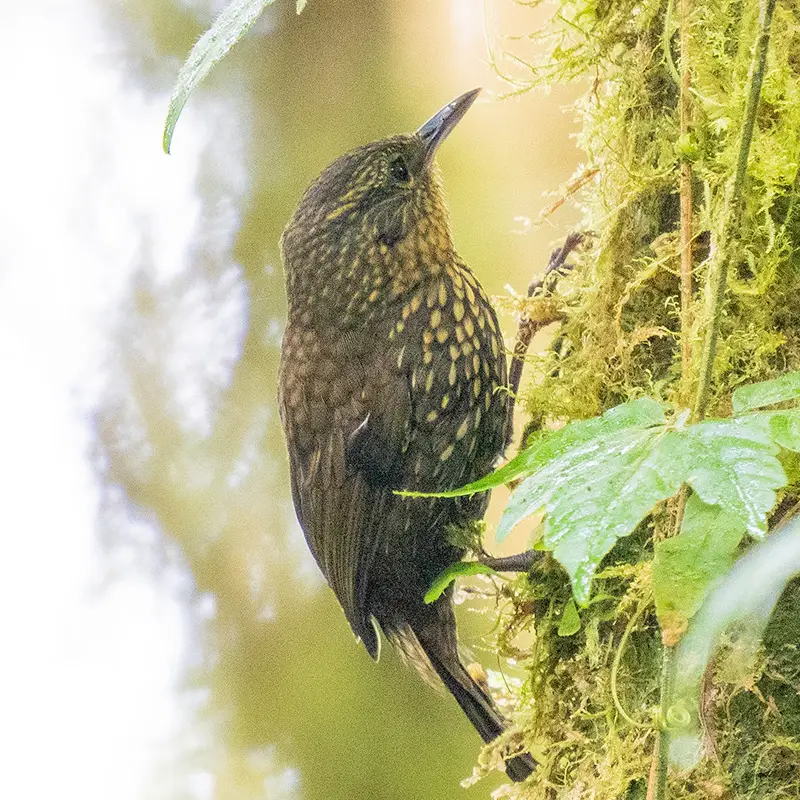
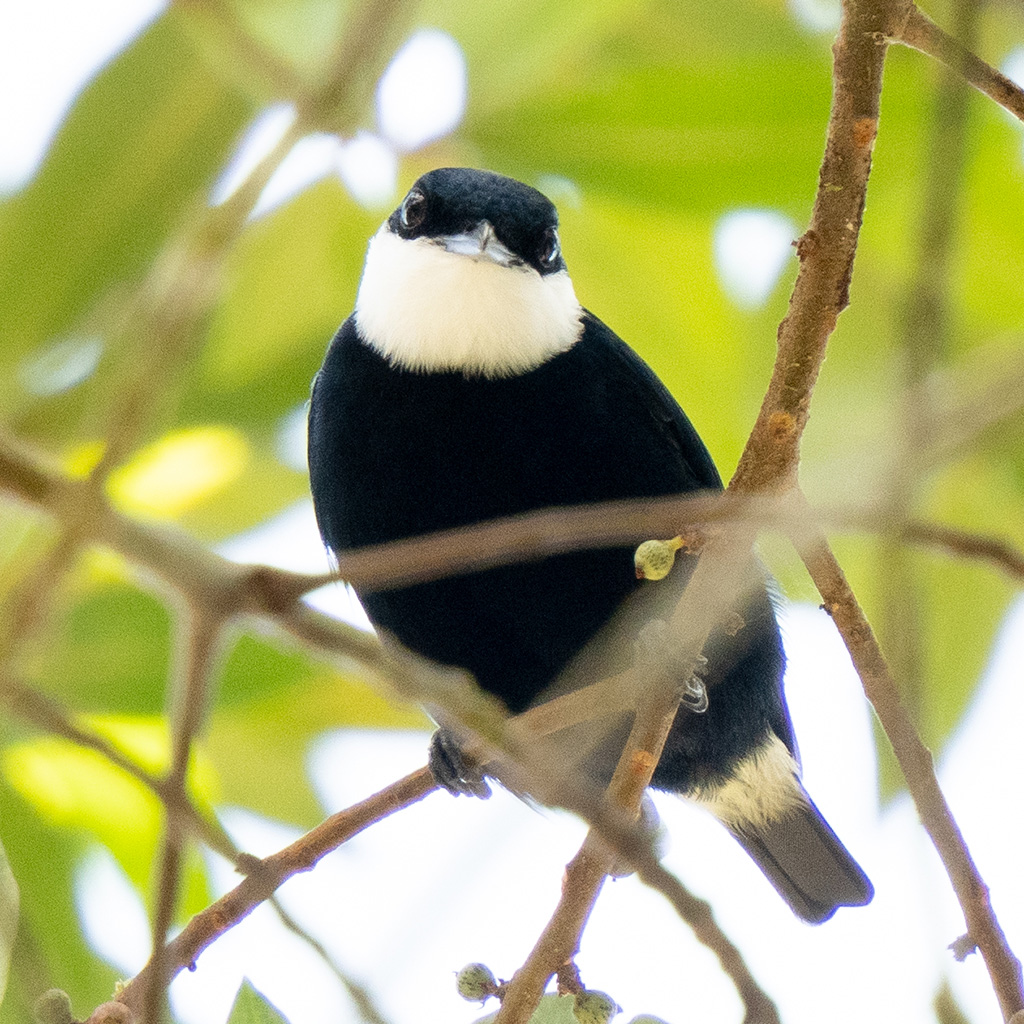
There were few birds while quiet walking along the forest trail but we did have good views of a Tufted Flycatcher, a bird with a limited range from Mexico to western Colombia.

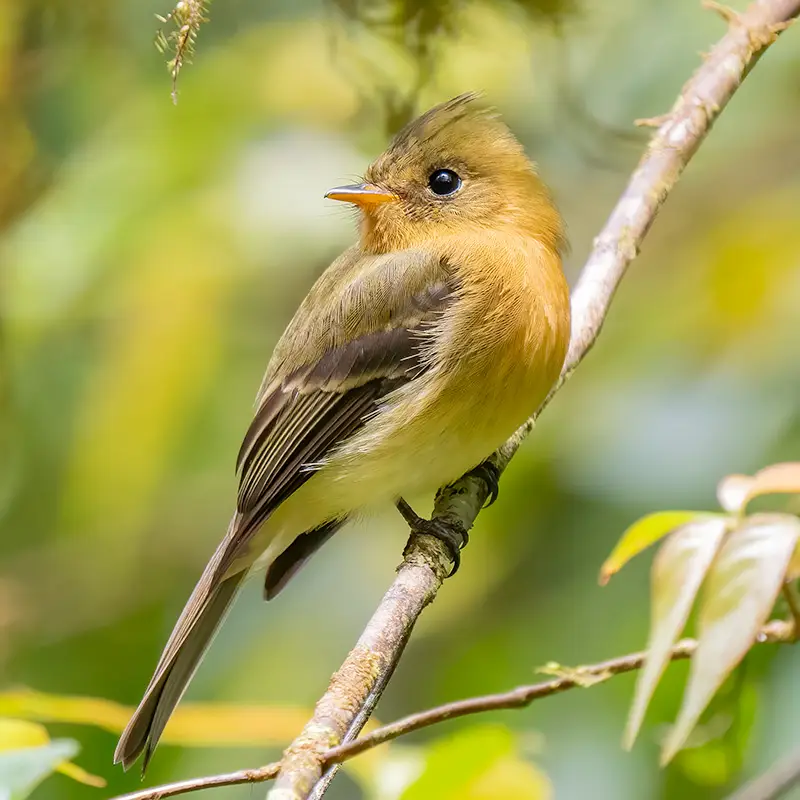
On the journey back to the lodge we made a couple of stops, with the best sighting being of a Northern Emerald-Toucanet.
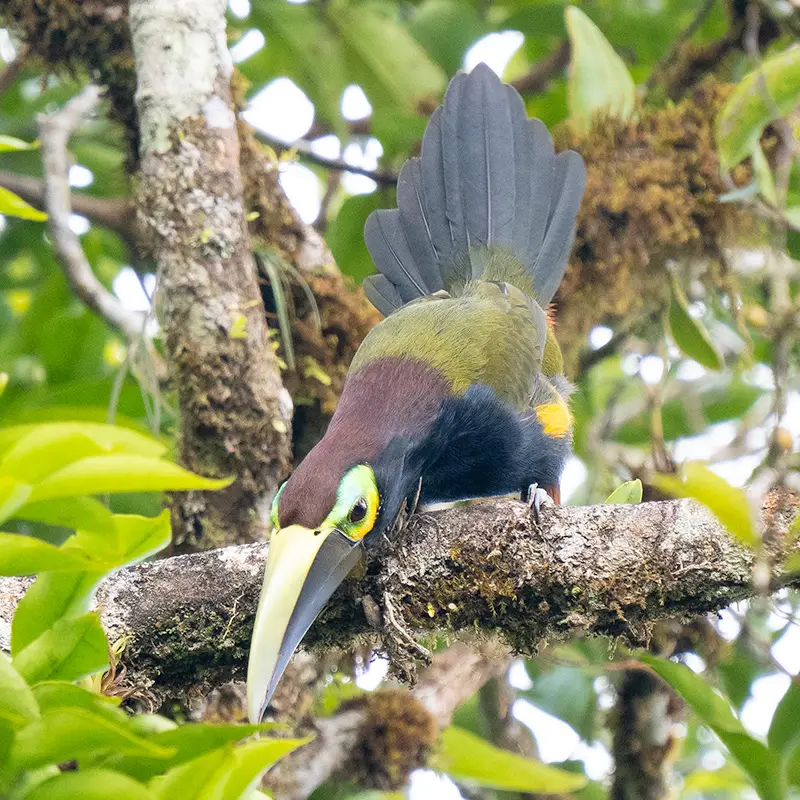
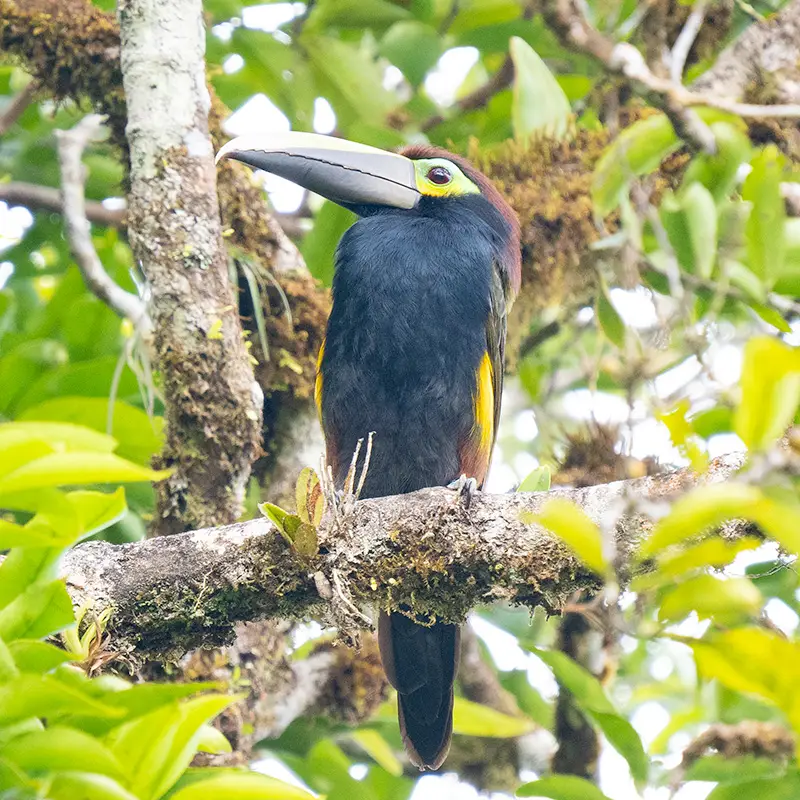
Our last full day at Canopy Lodge was 18 February and in the morning we travelled to a densely-forested area just off the La Mesa Road with the goal of photographing the Black-crowned Antpitta. On the way we had good views of a Black-chested Jay and a Broad-billed Motmot, plus various birds on a pond beside the road.

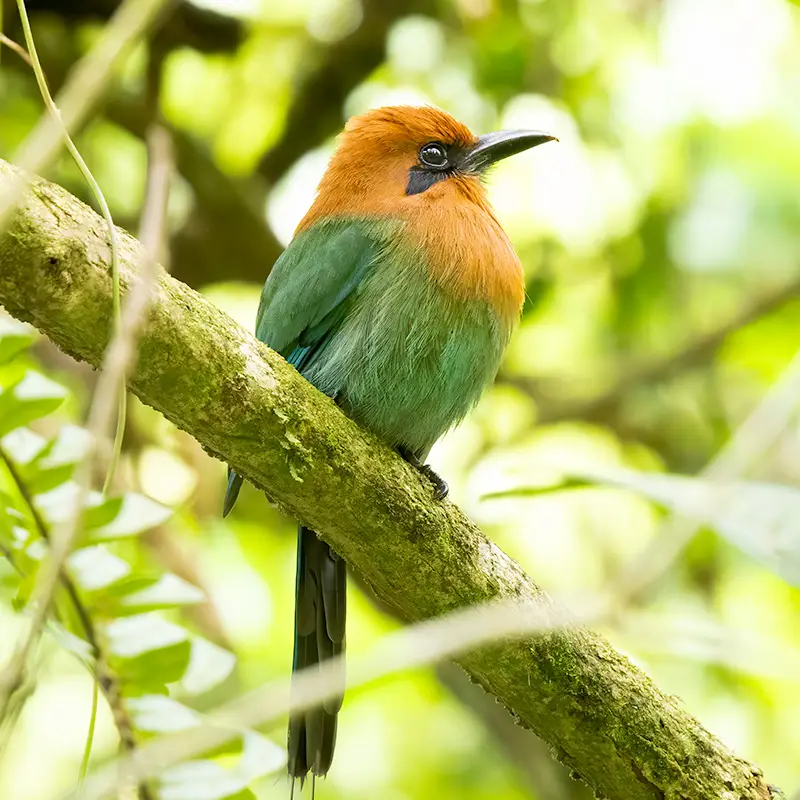
After travelling north up the La Mesa Road we walked a short distance west along the edge of cultivated fields before entering a densely-wooded area where the antpitta had been seen previously. The path through the forest was quite rough and it was a while before we heard the distinctive call of the antpitta. As we moved forward we could tell we were getting closer to the bird, but the vegetation was so thick it was difficult to get a clear view. However, with perseverance we did finally manage to get ourselves into a position where we could see virtually the whole of the bird and get a few good photos.
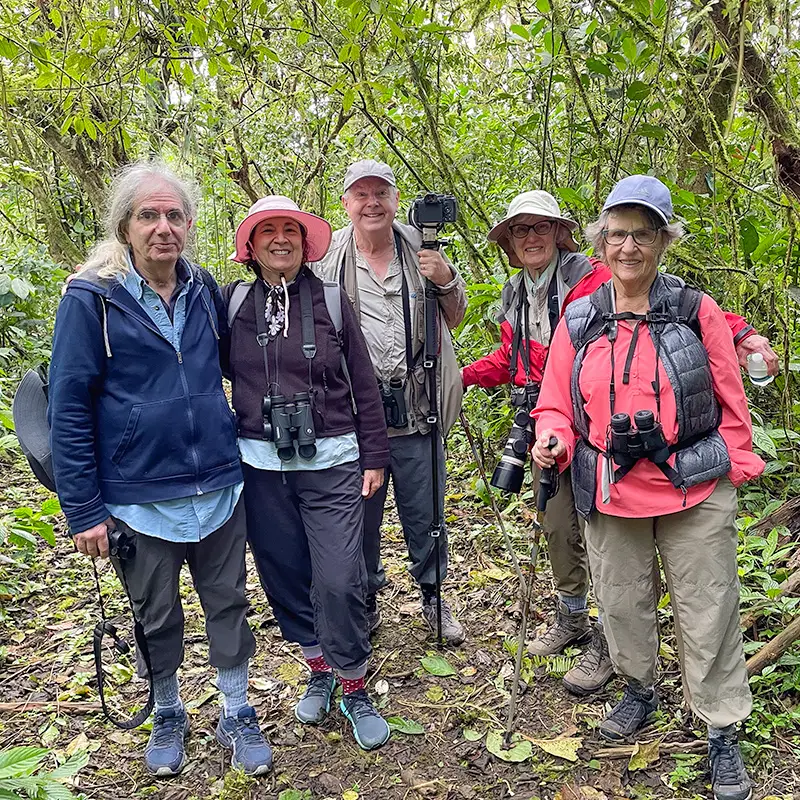
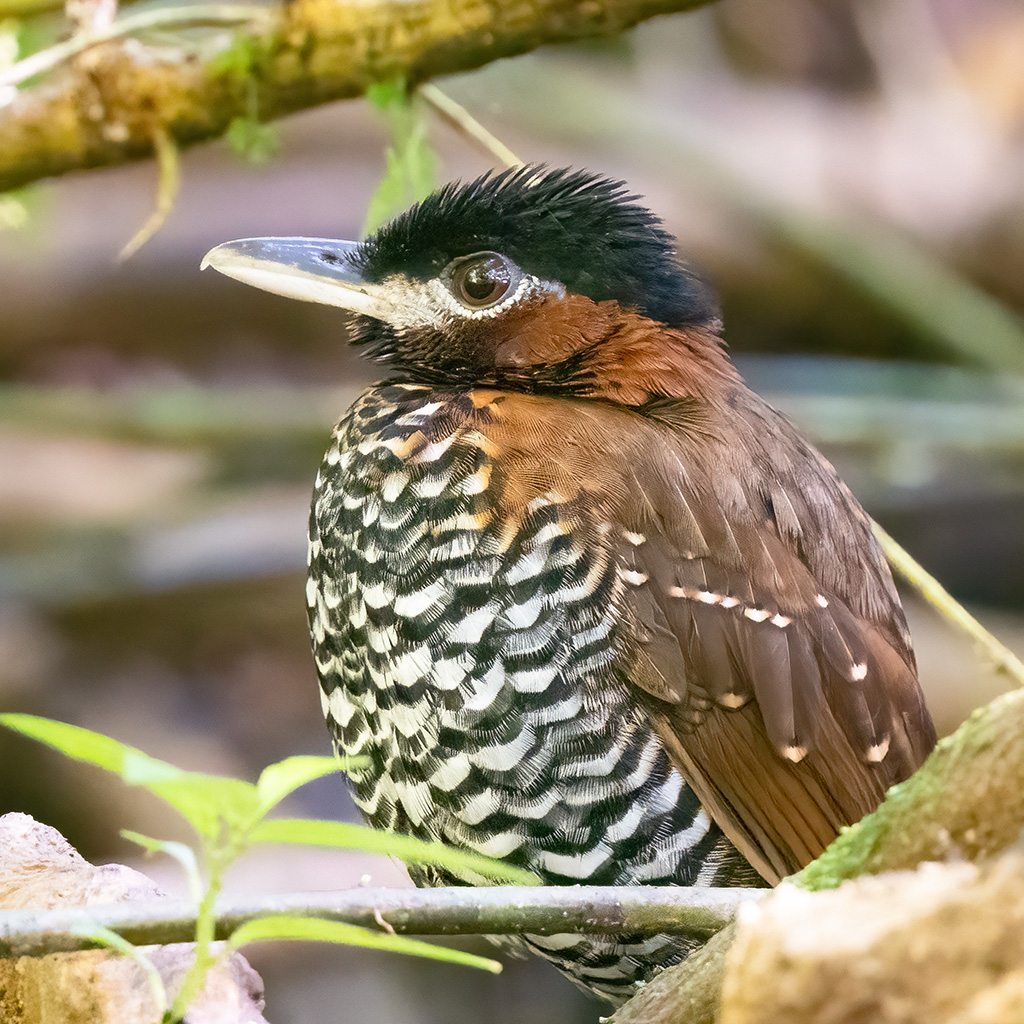
Following the challenging hunt for the Black-crowned Antpitta, we then walked an easier trail where we had good views of another antpitta – the Streak-chested Antpitta, plus Black-throated Trogon and Slaty Antwren


In the afternoon of 18 February we walked The Waterfall Trail, which is located just north of the lodge close to the La Mesa Road. Beside the road near the entrance to the trail we came across a Rufous-crested Coquette, a stunning hummingbird found in Central America and the Pacific slopes of South America. A Grey-cowled Wood-rail crept out from the forest just as we started walking the trail. The birds were a bit reluctant to show themselves for much of the walk, but a colourful Rufous-capped Warbler hopped onto a log close to us and from a bridge we saw a Sunbittern. This bird, which is found from Central America to northern South America, is the only member of the family Eurypygidae and was a ‘lifer’ for us.

